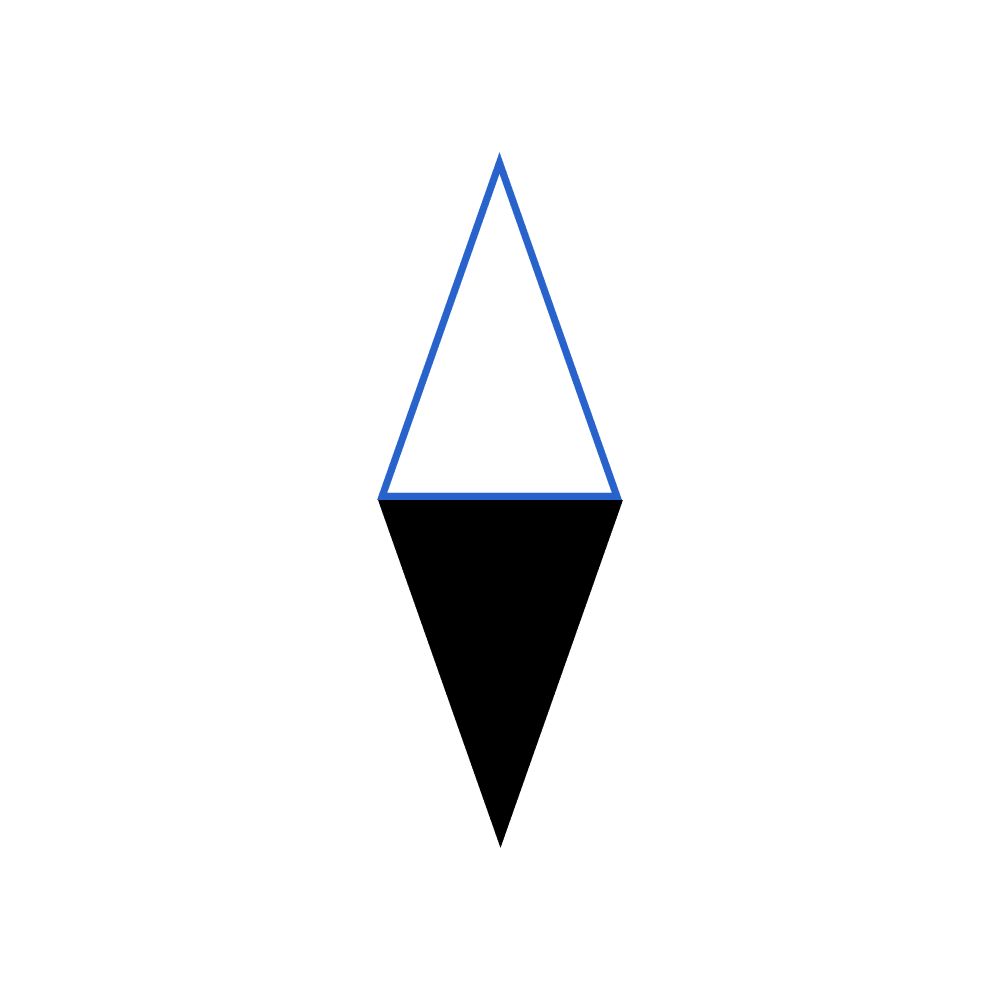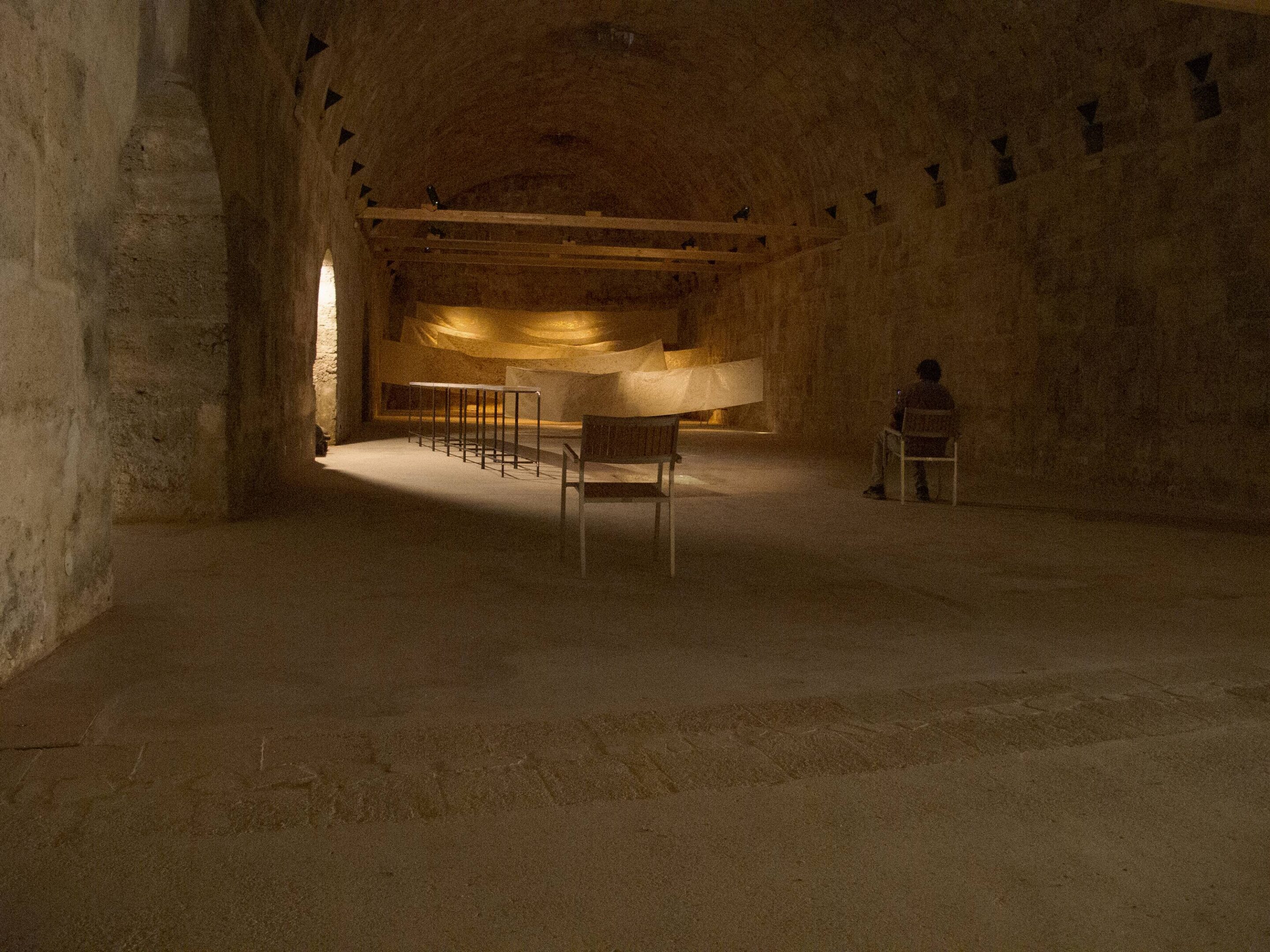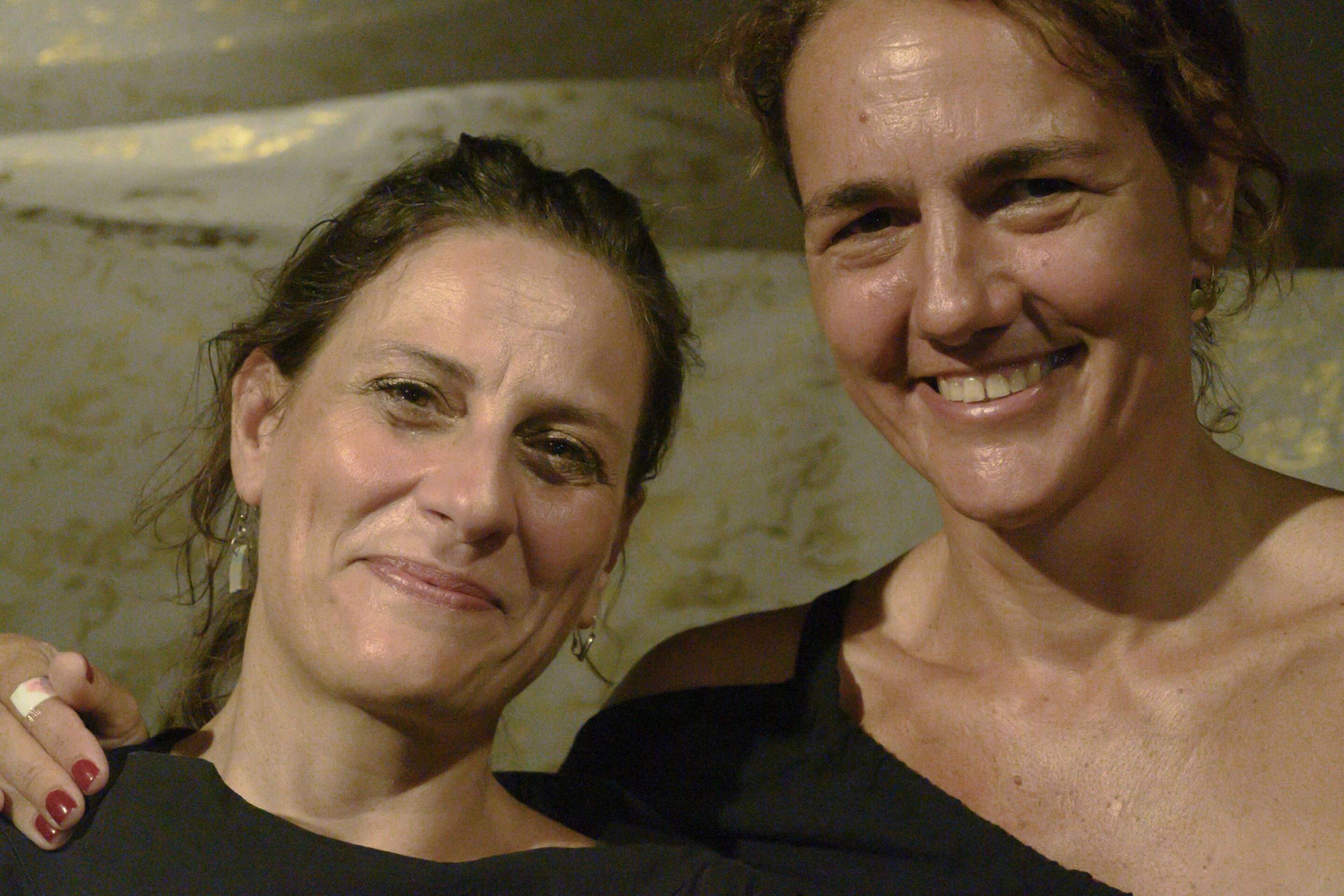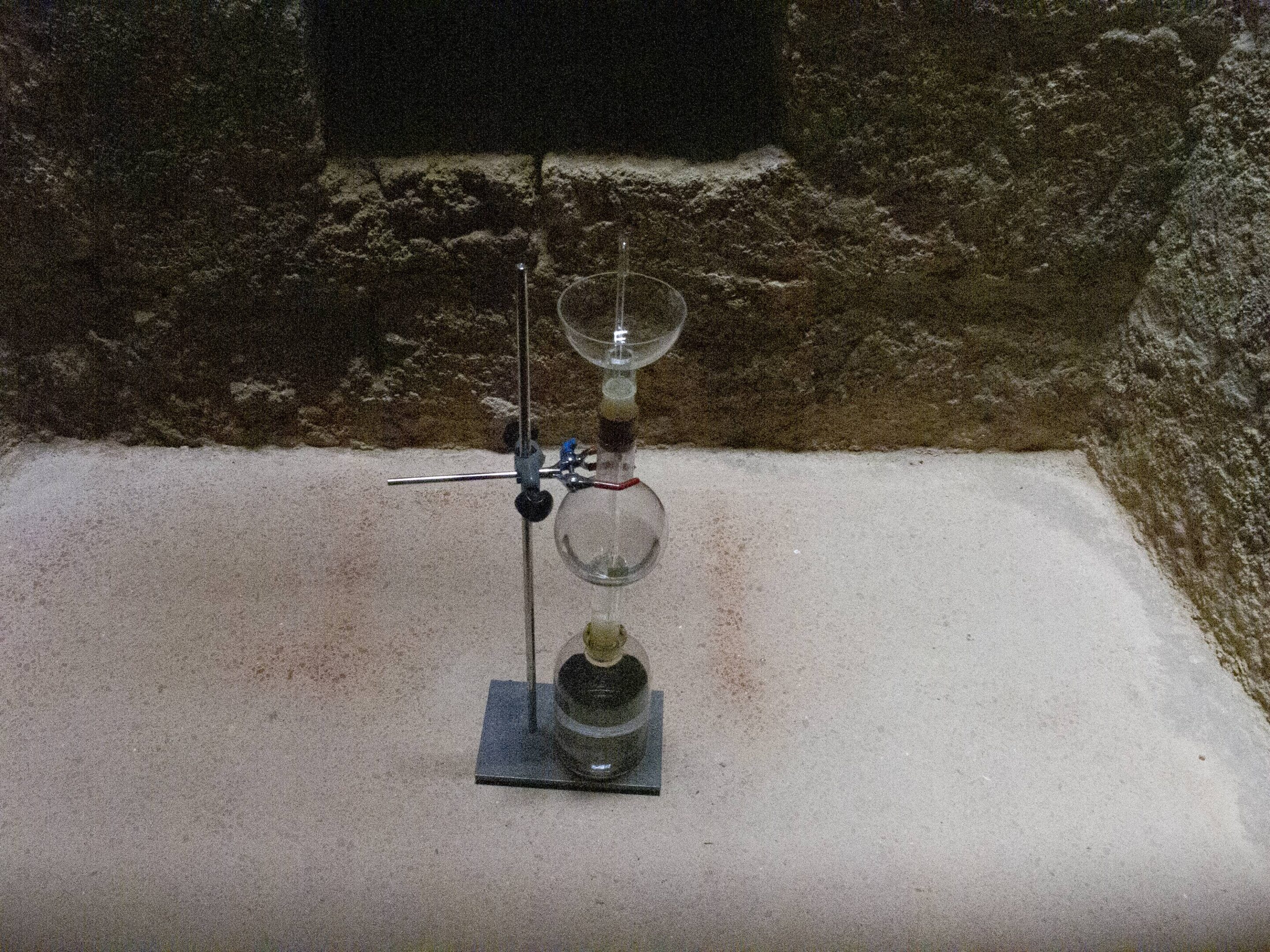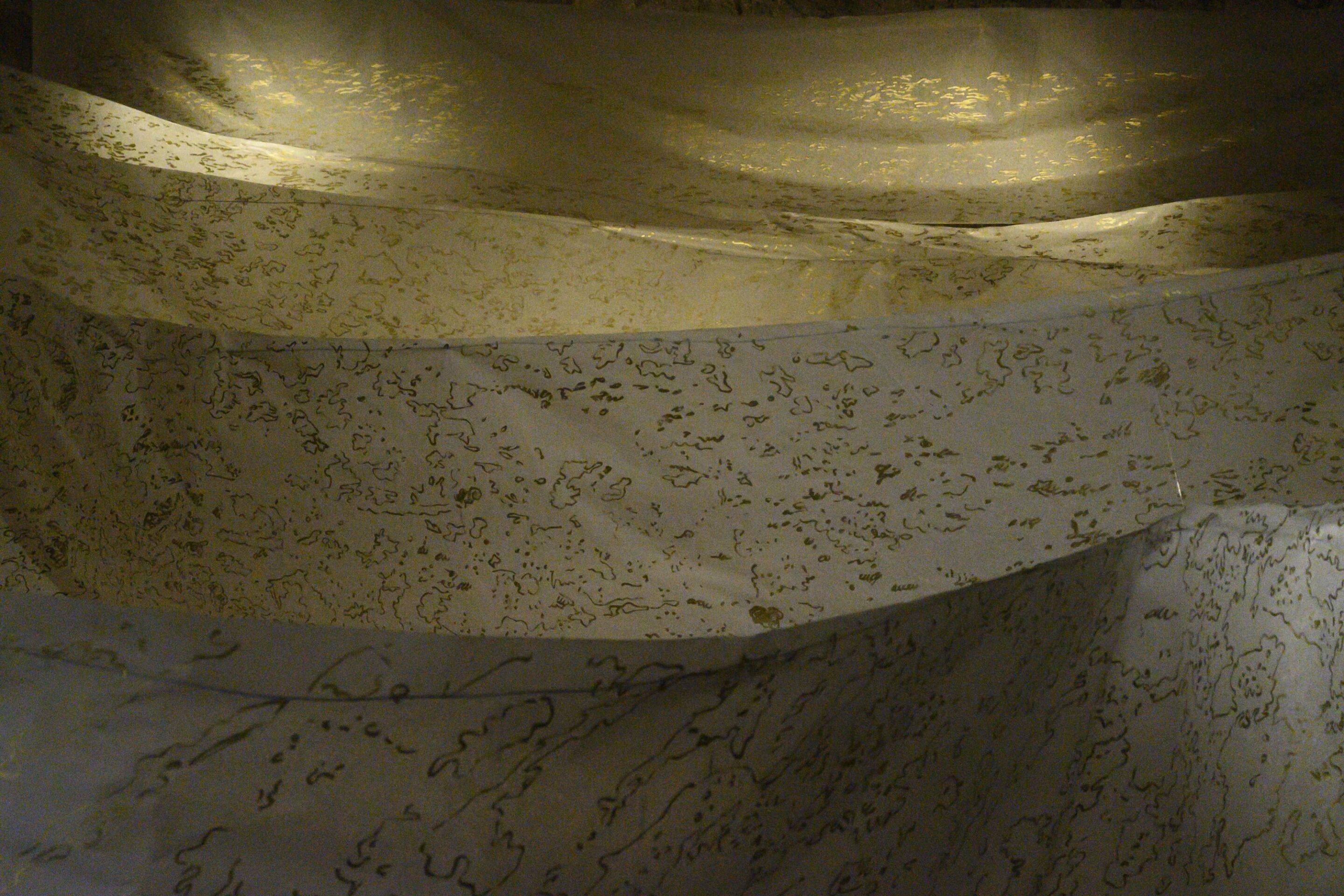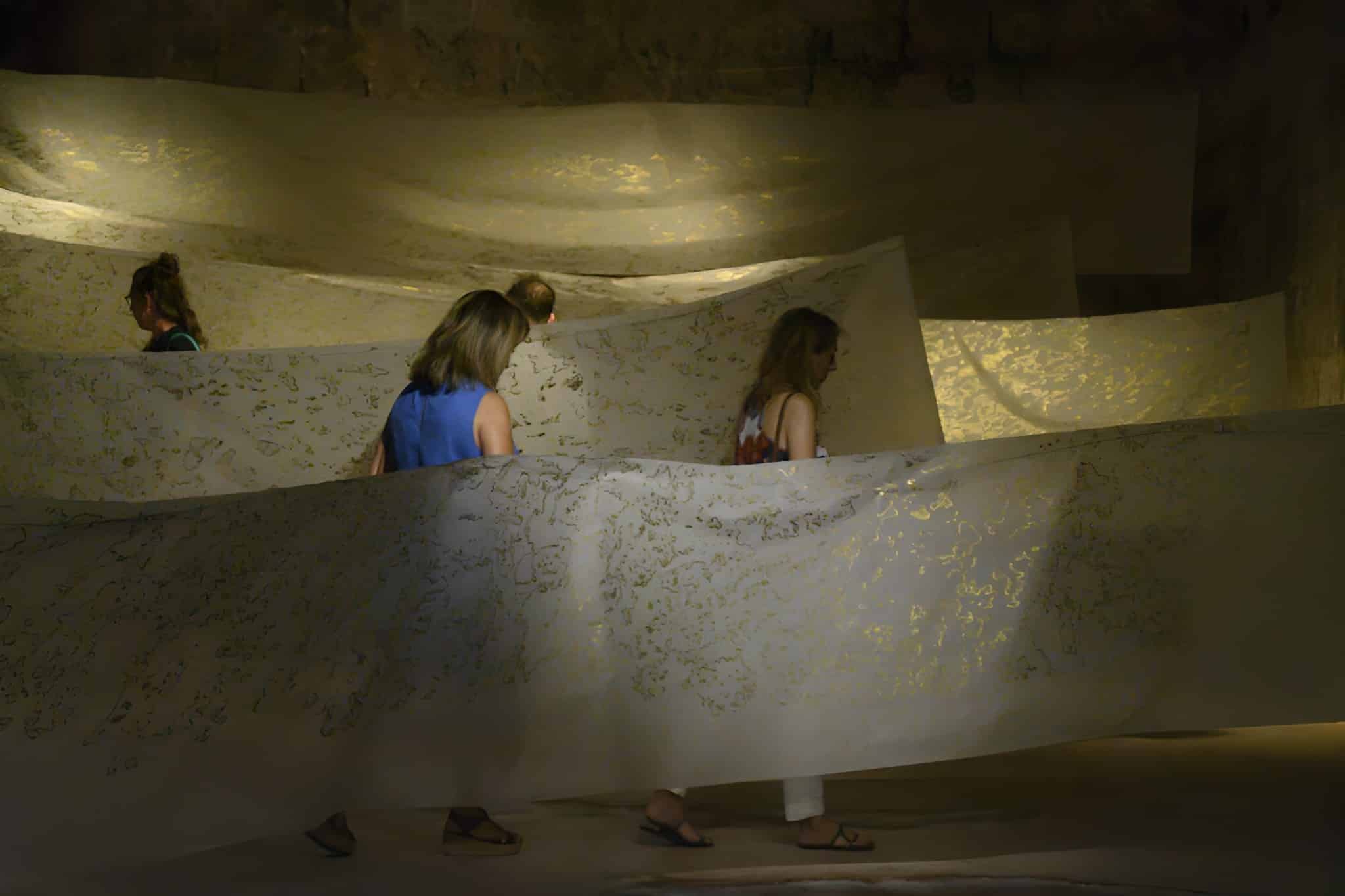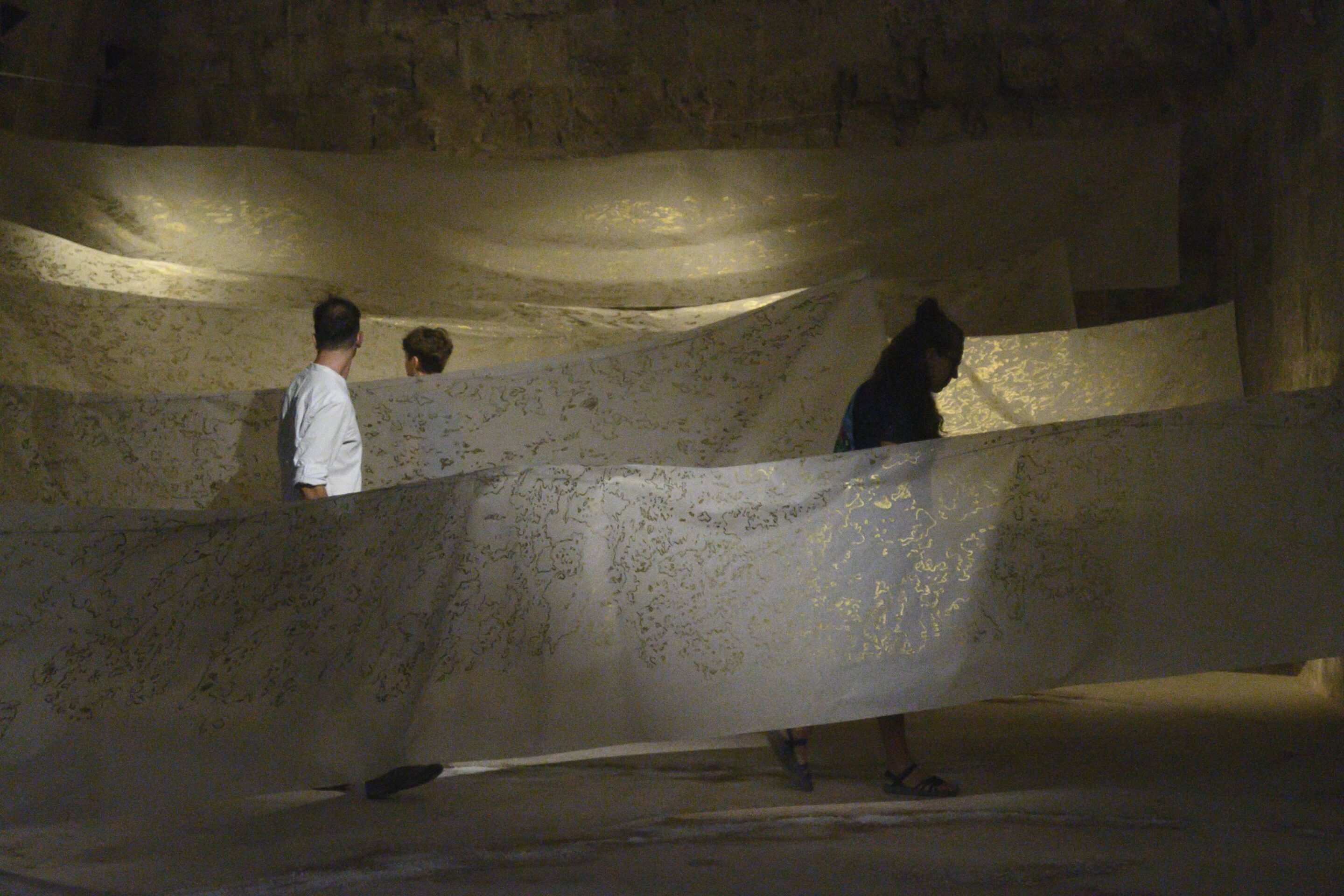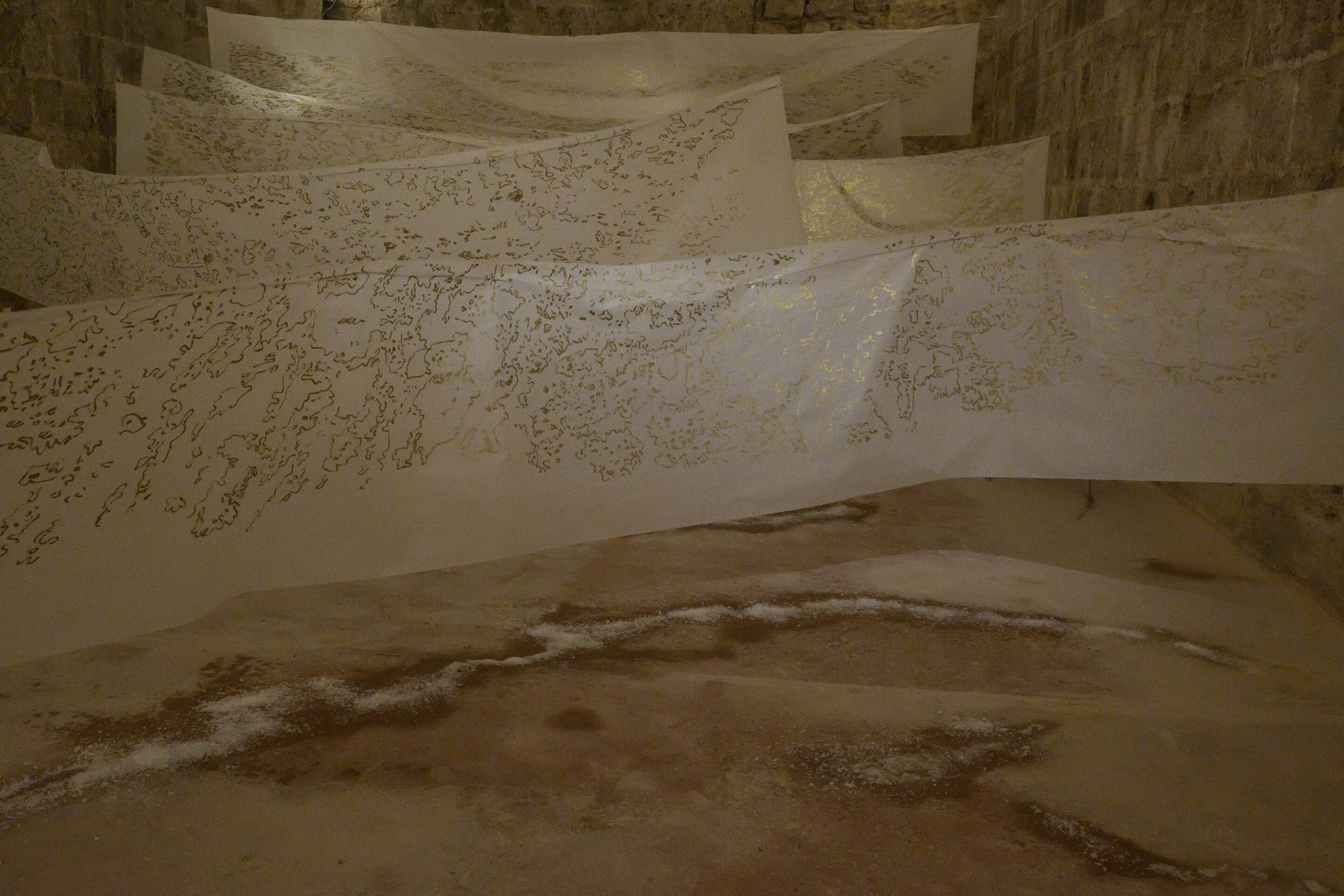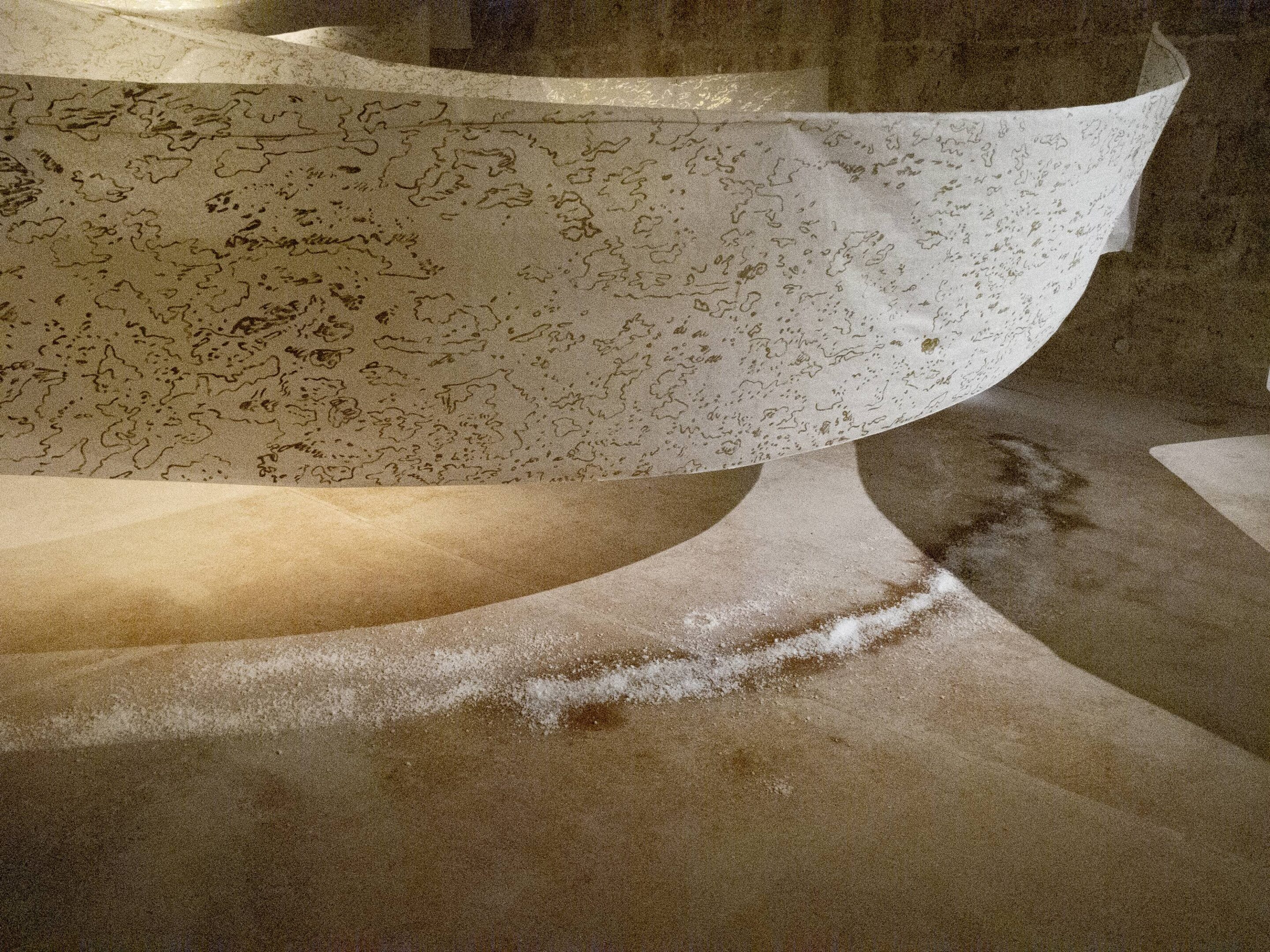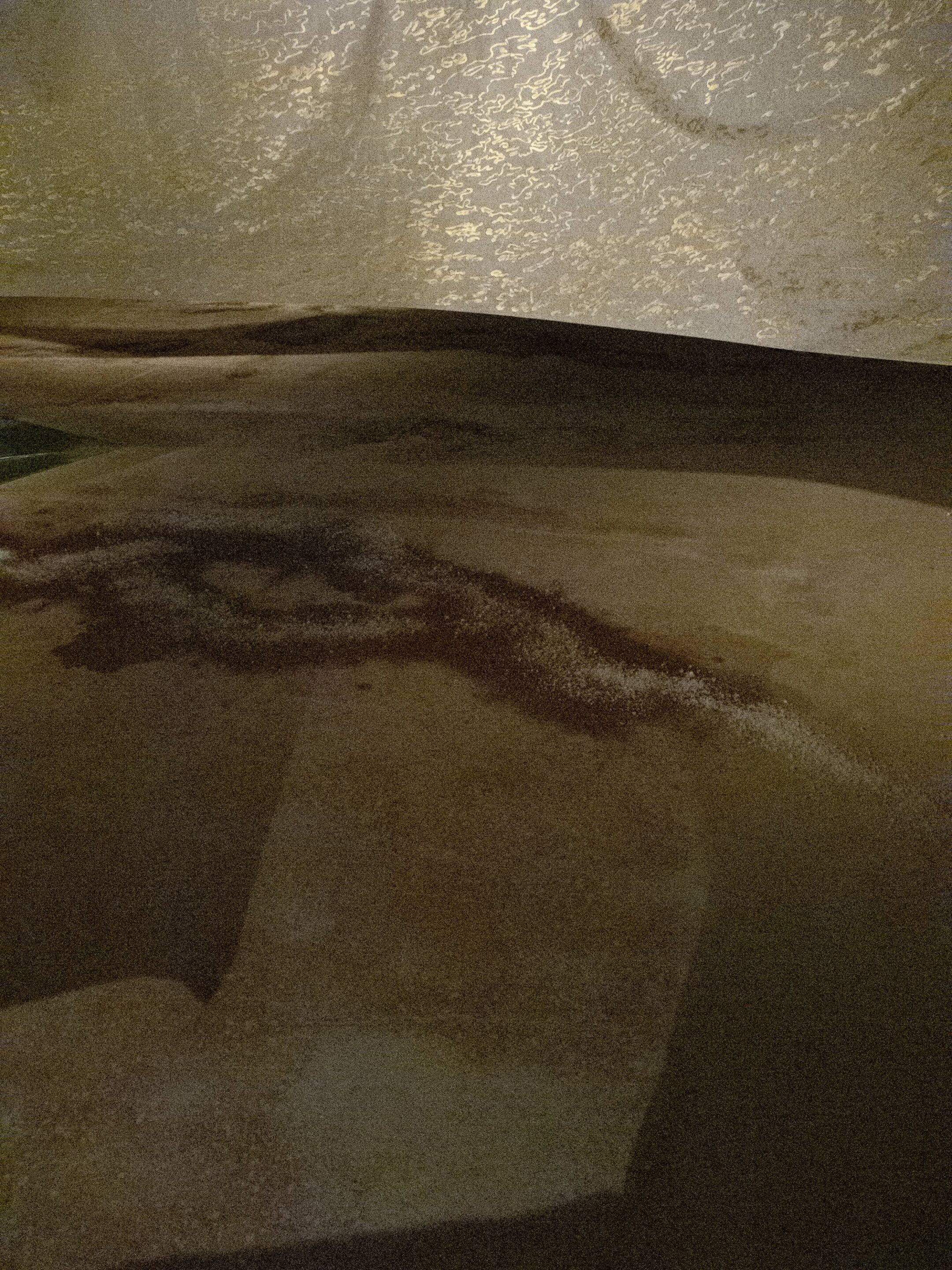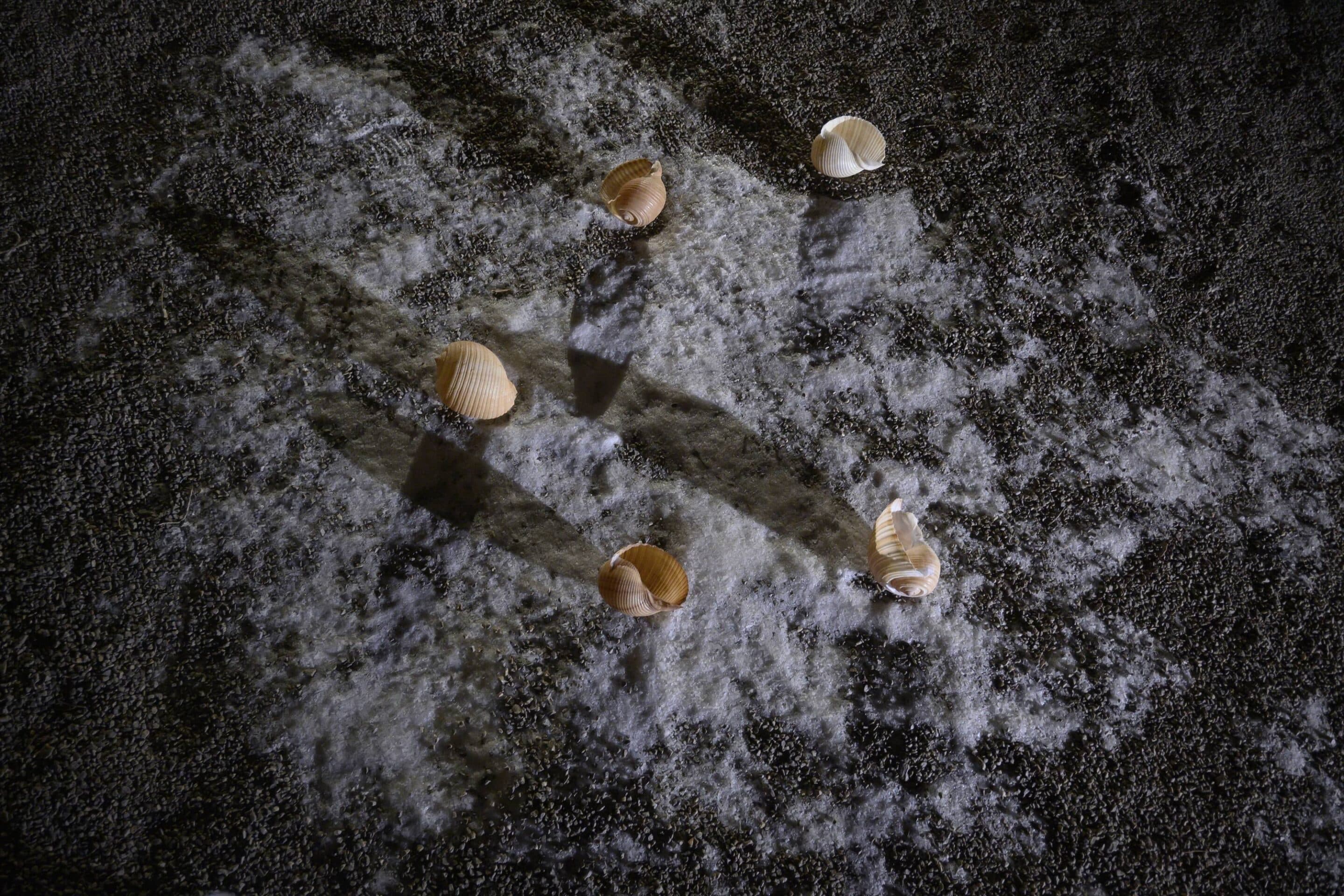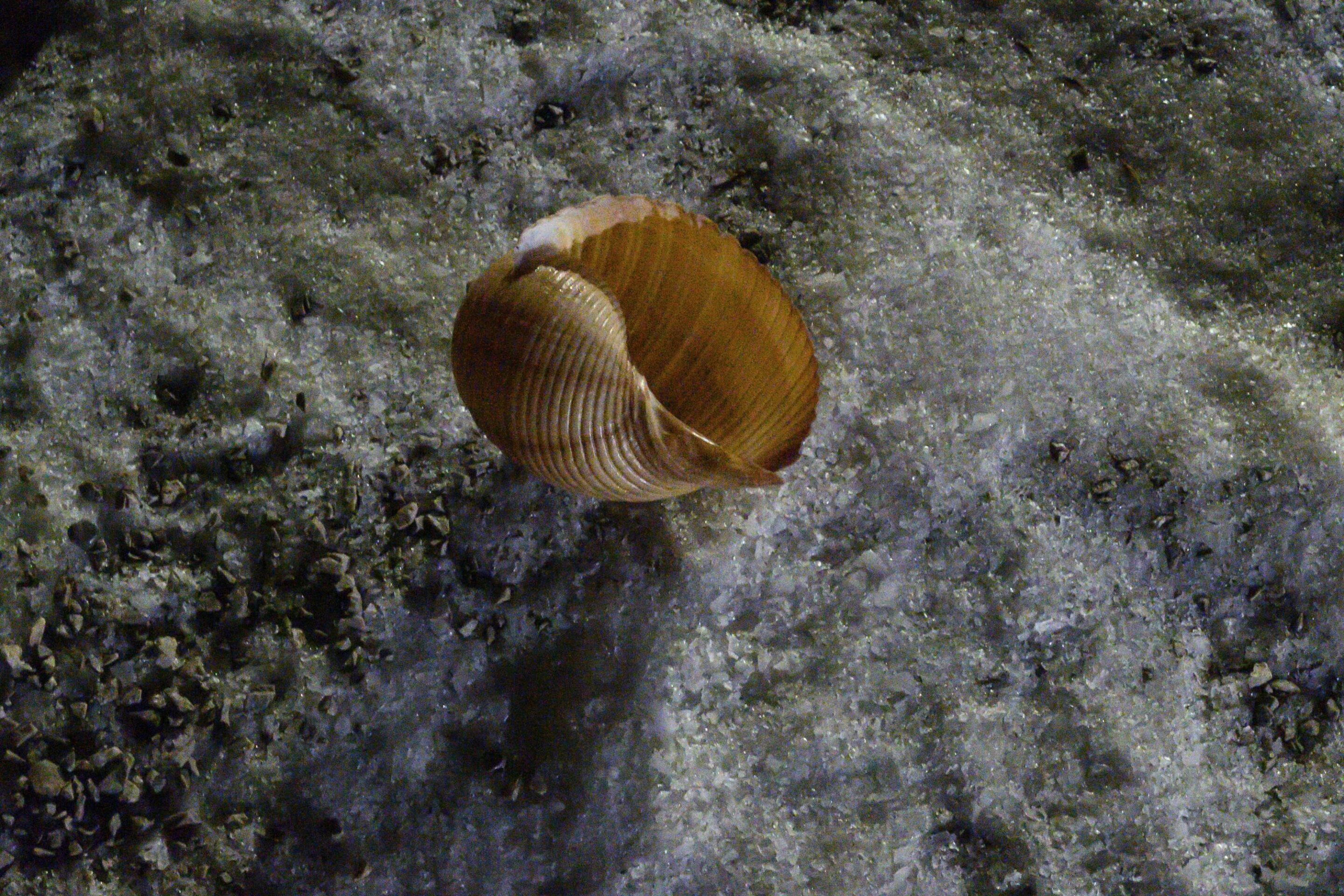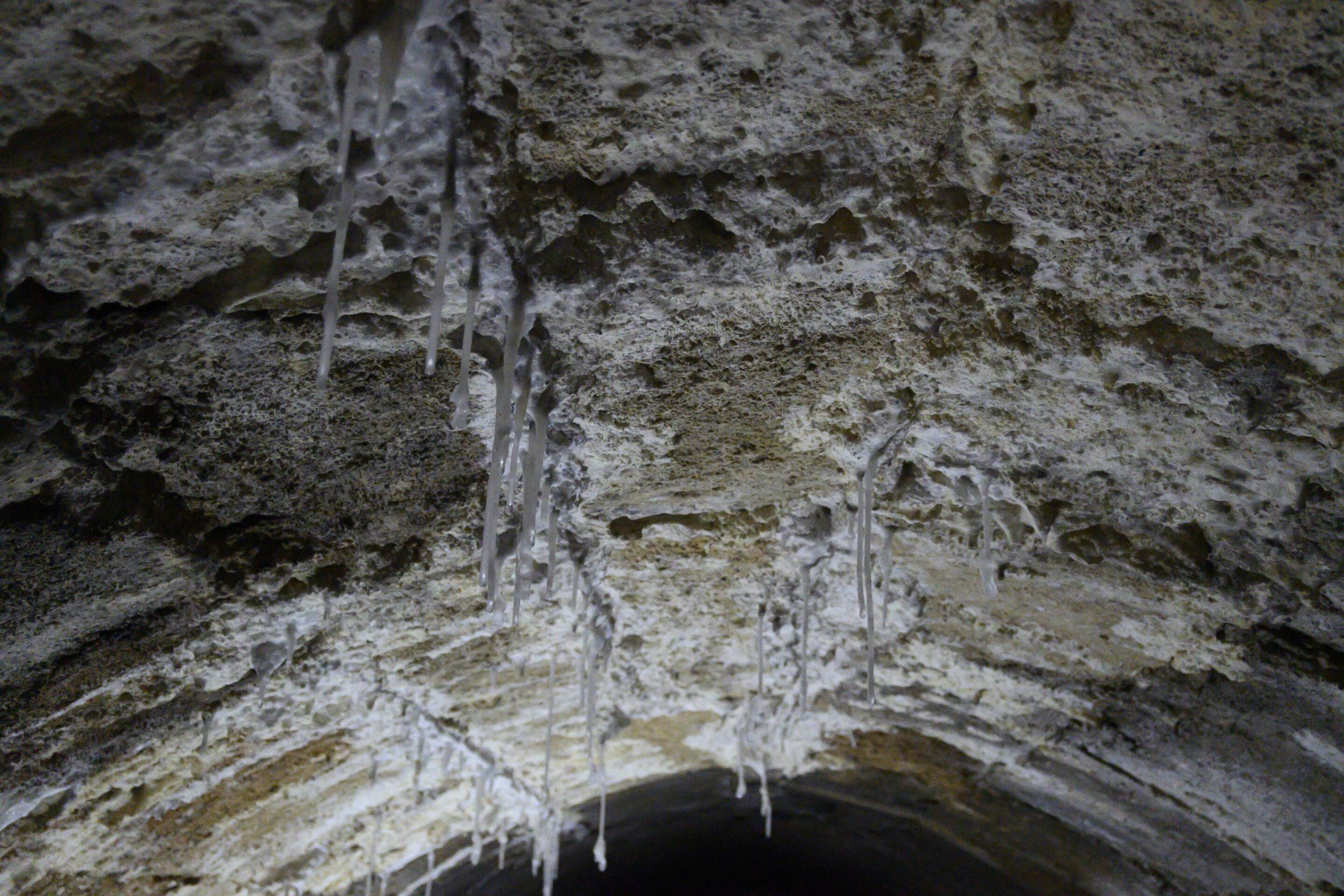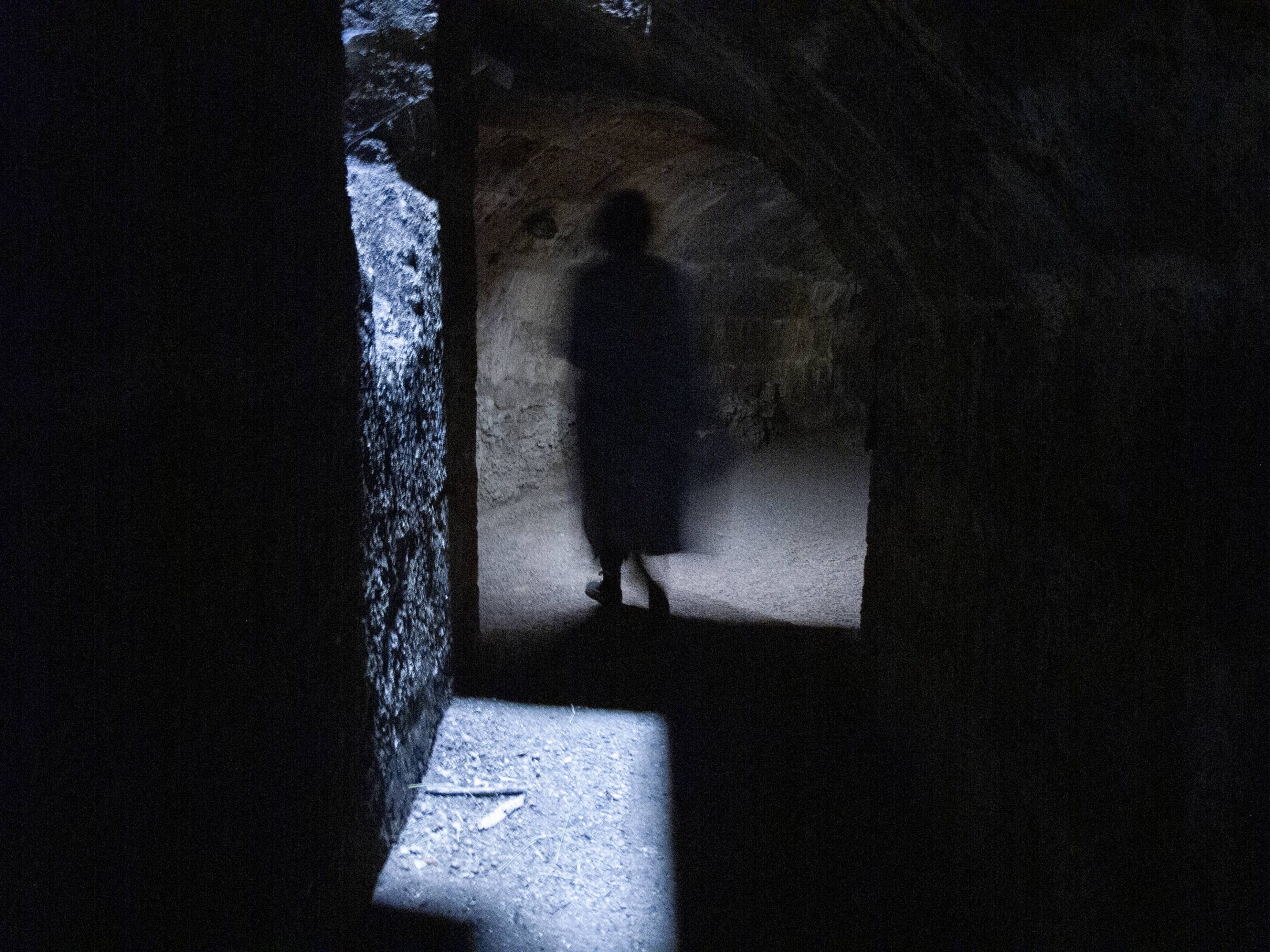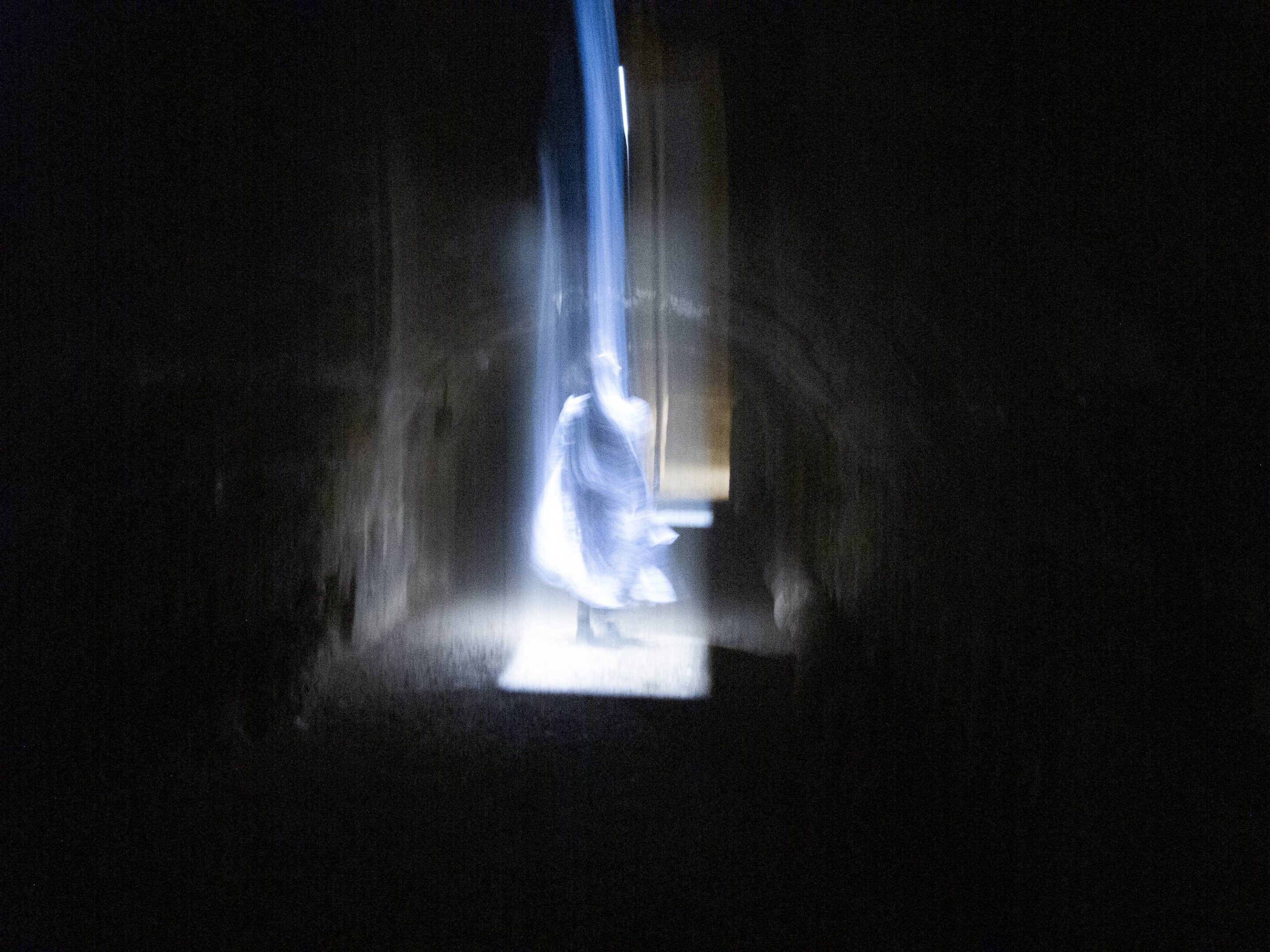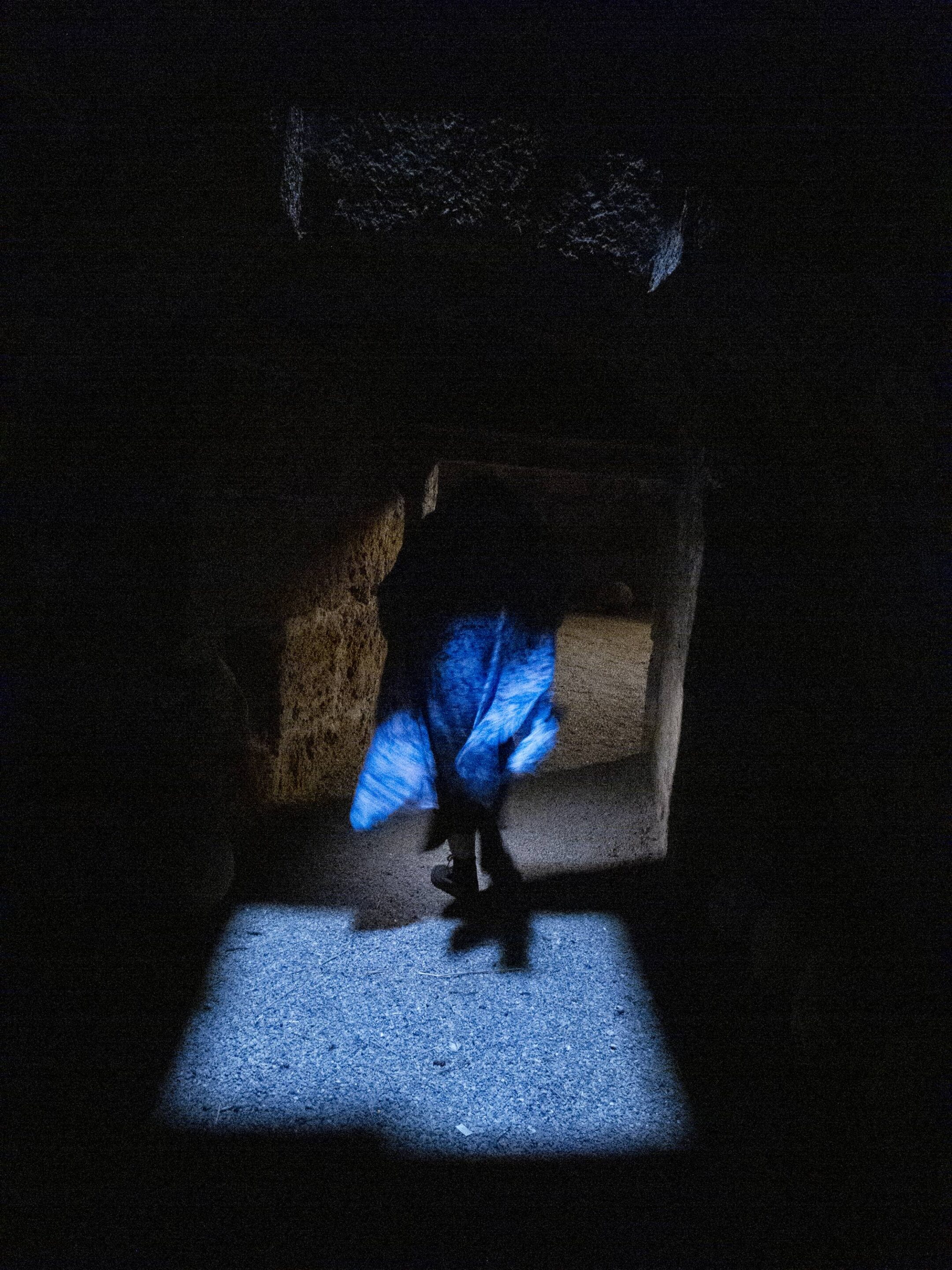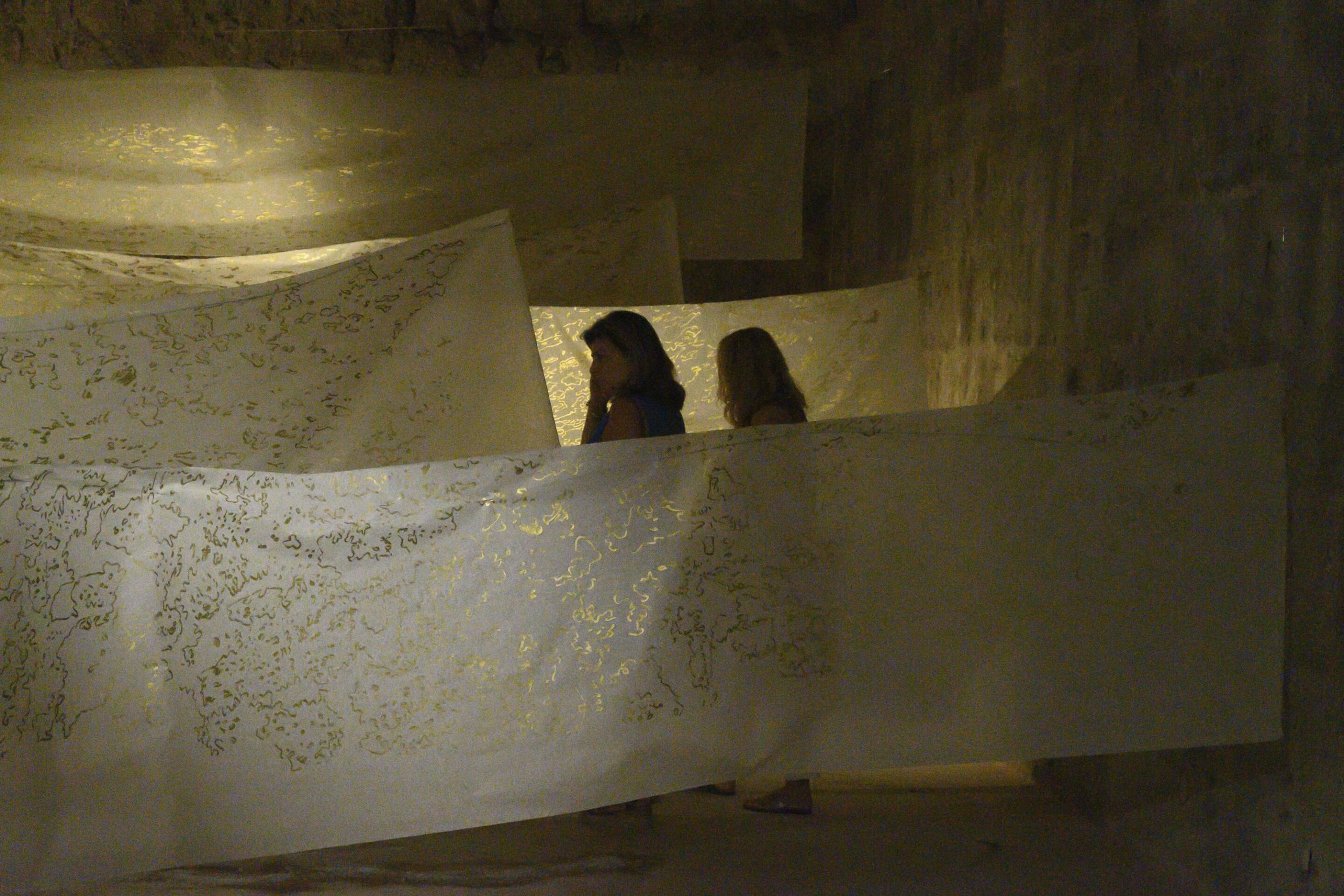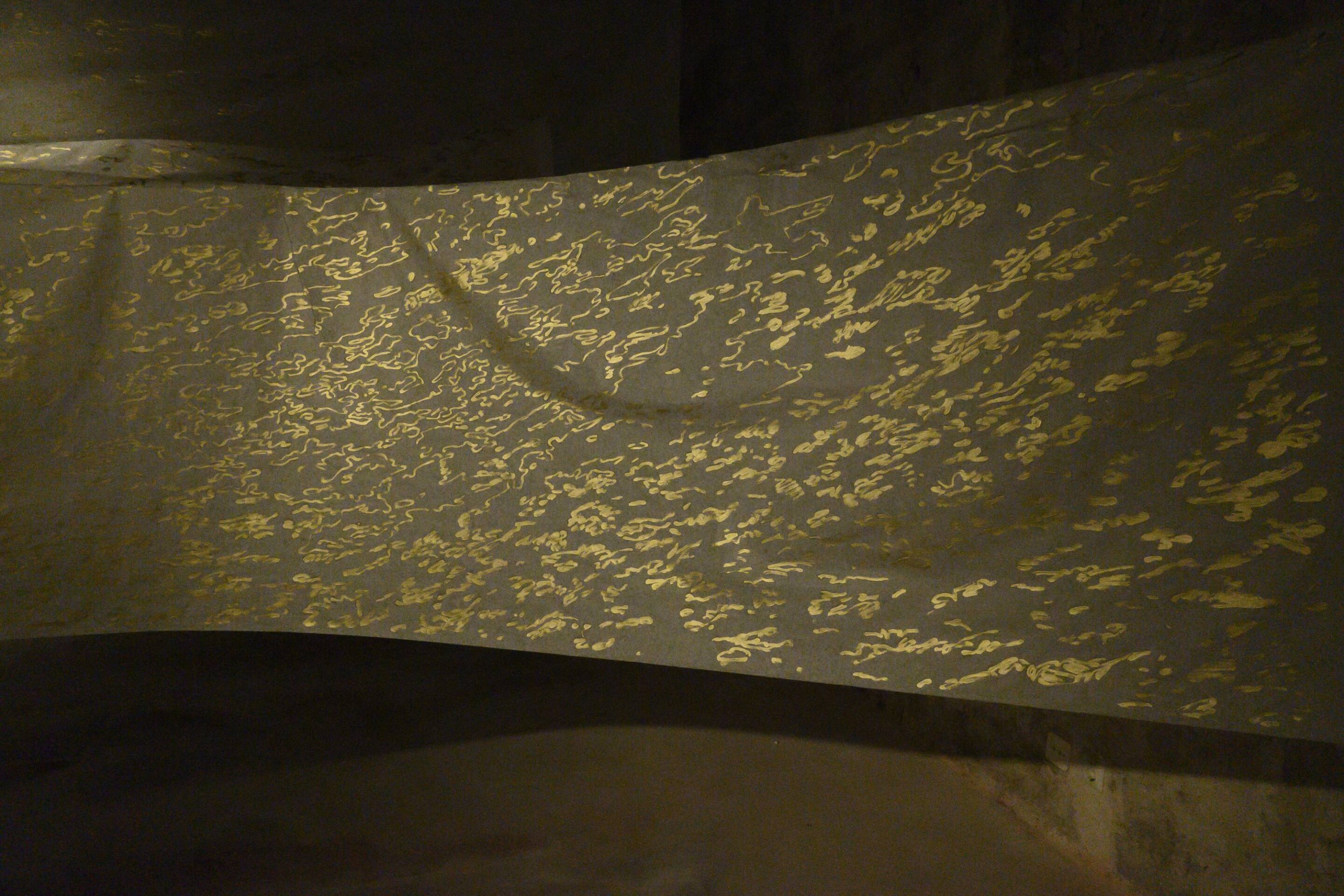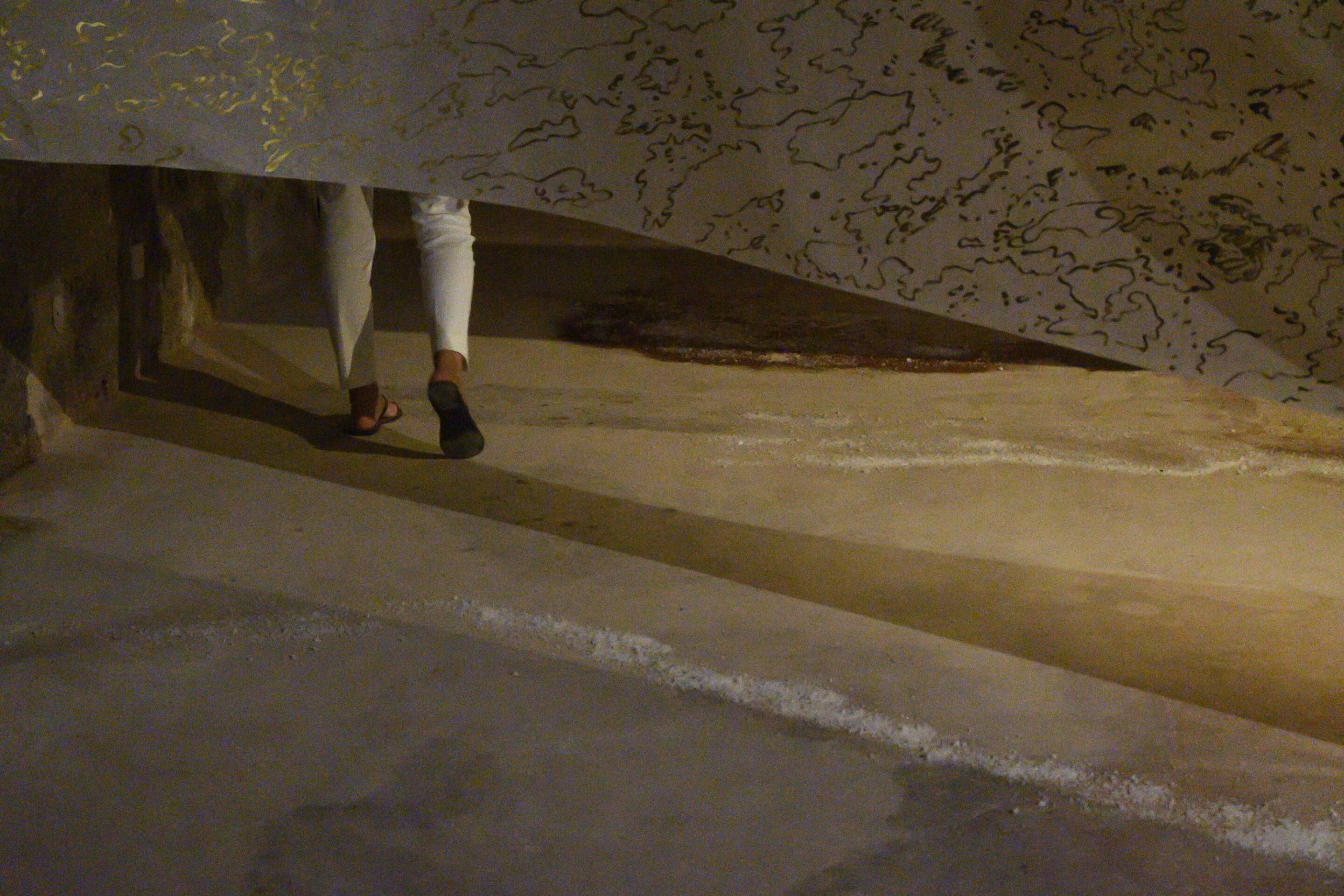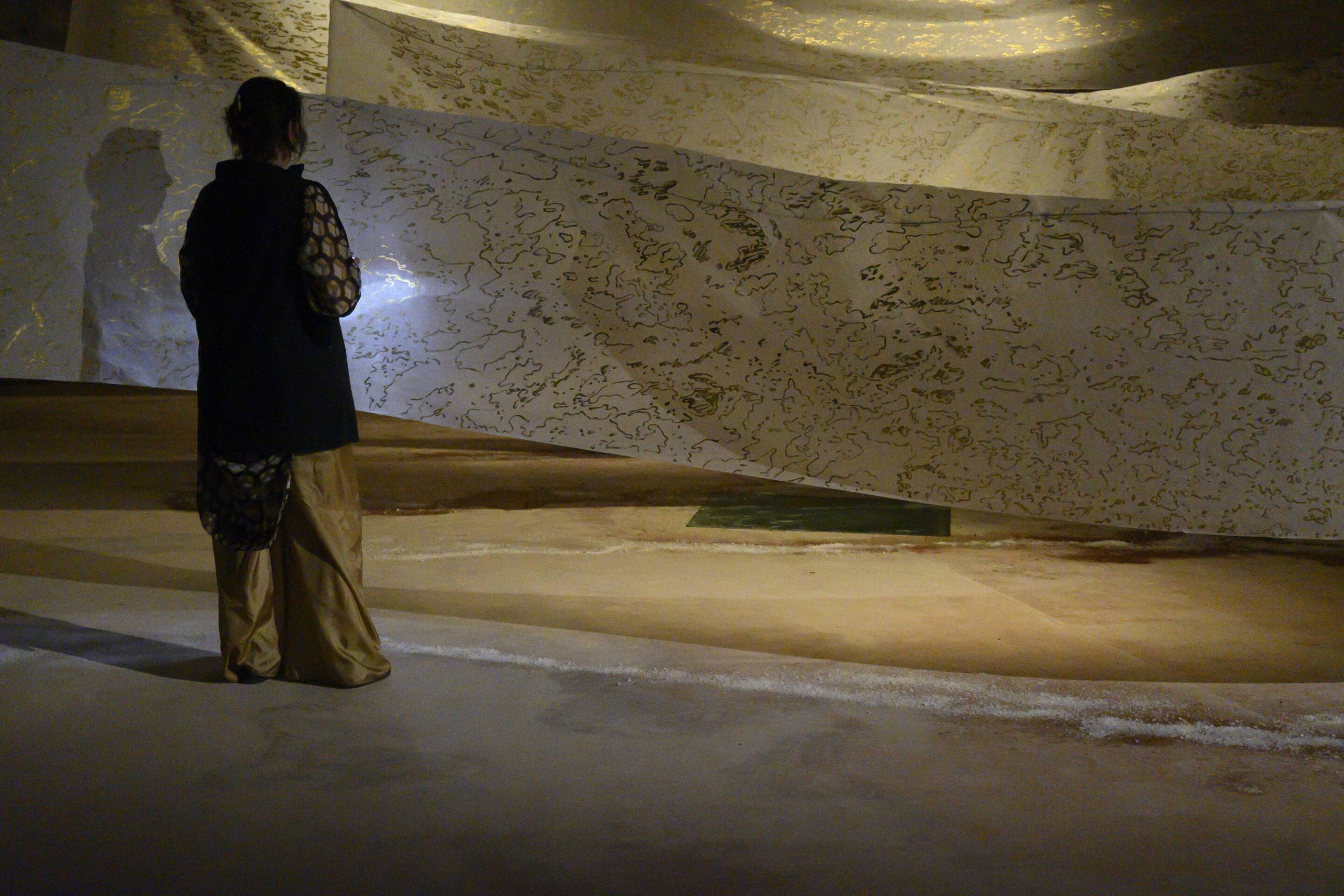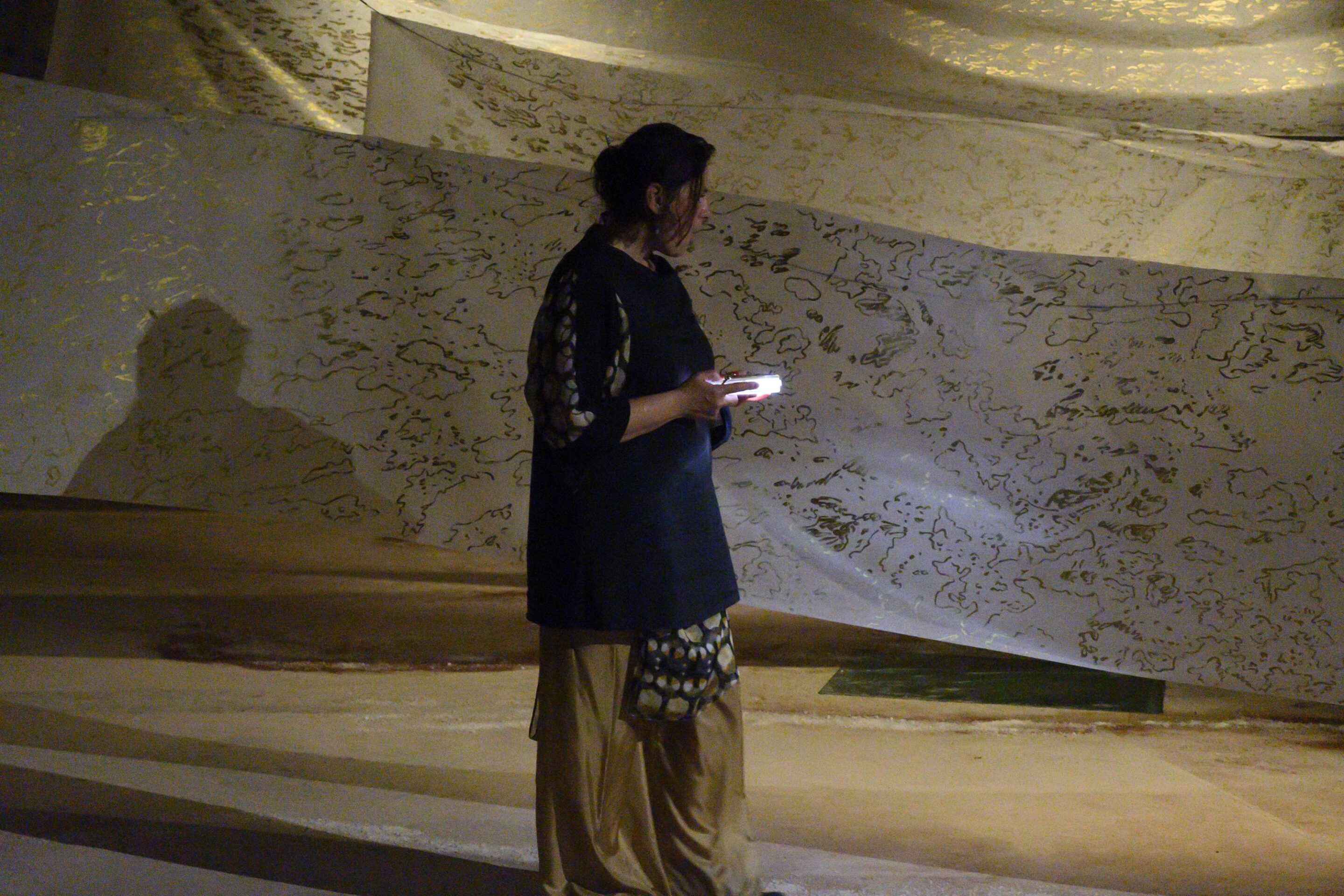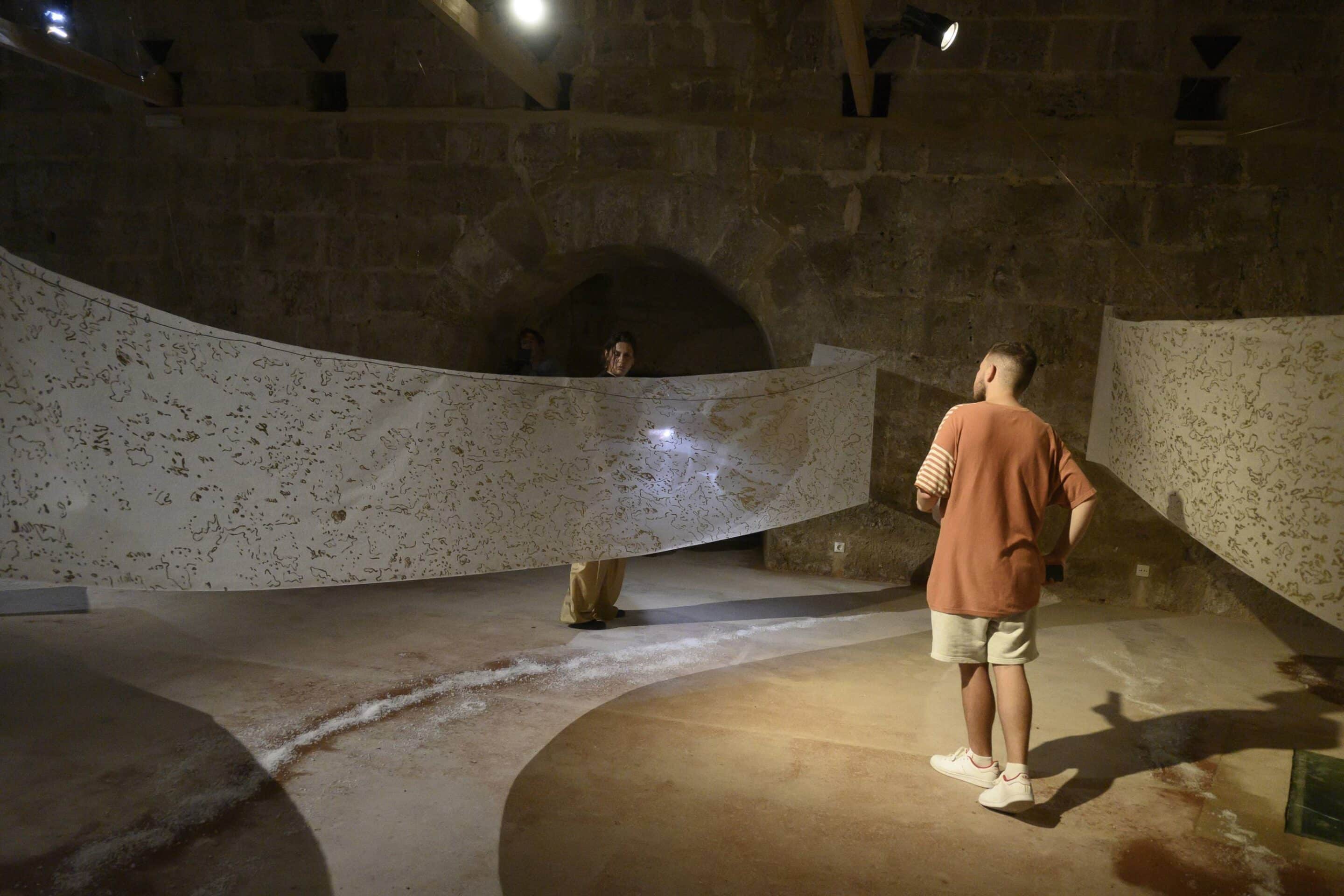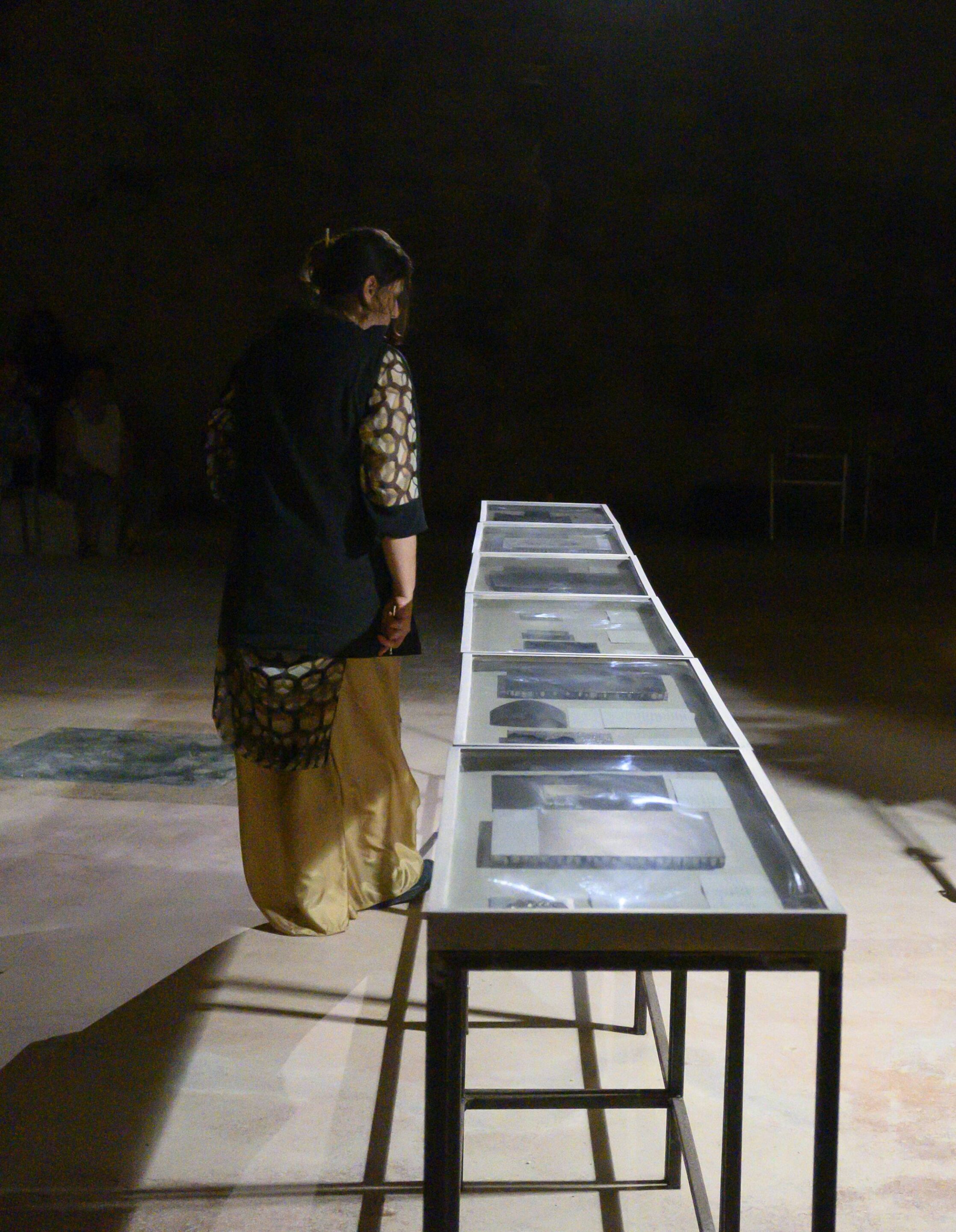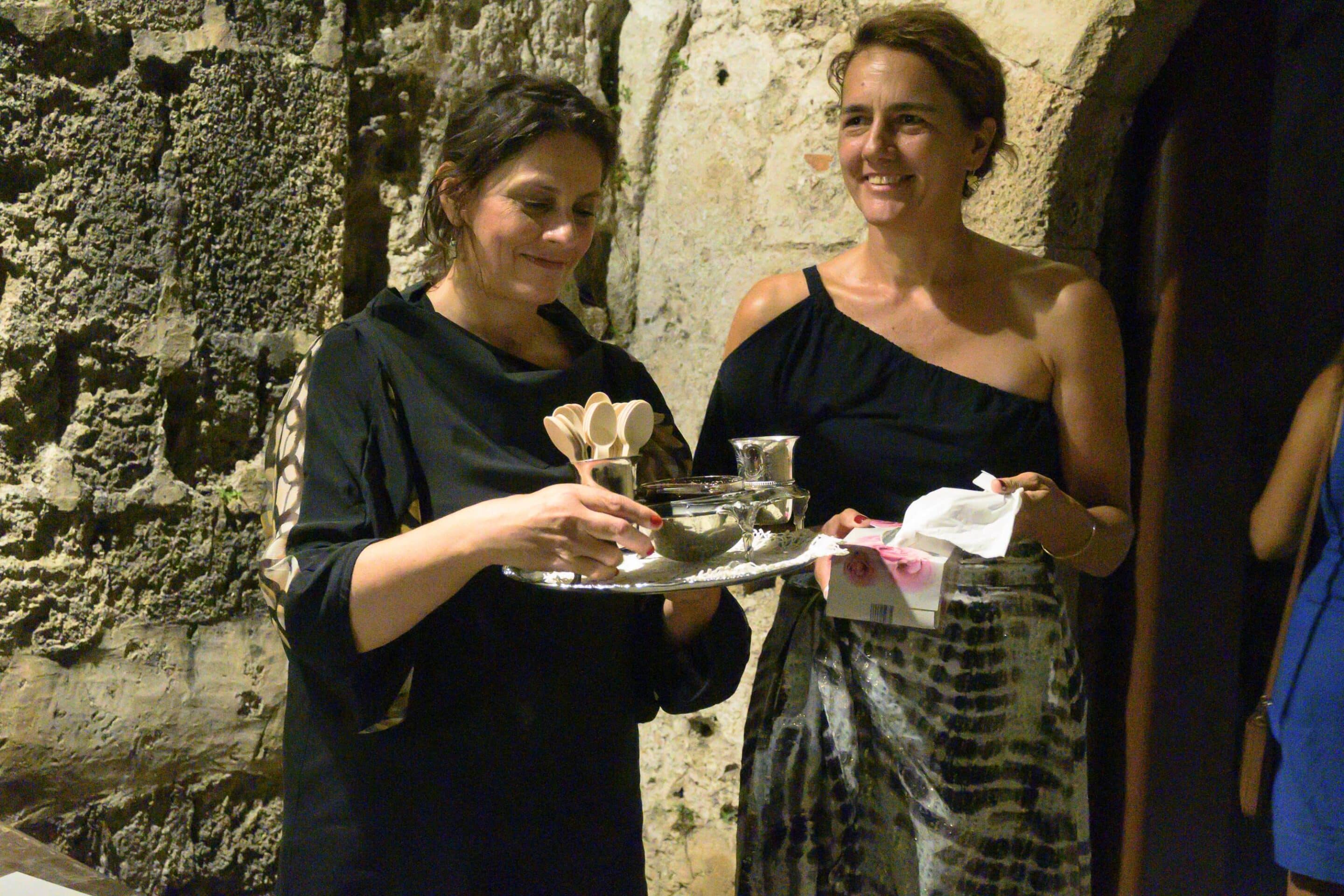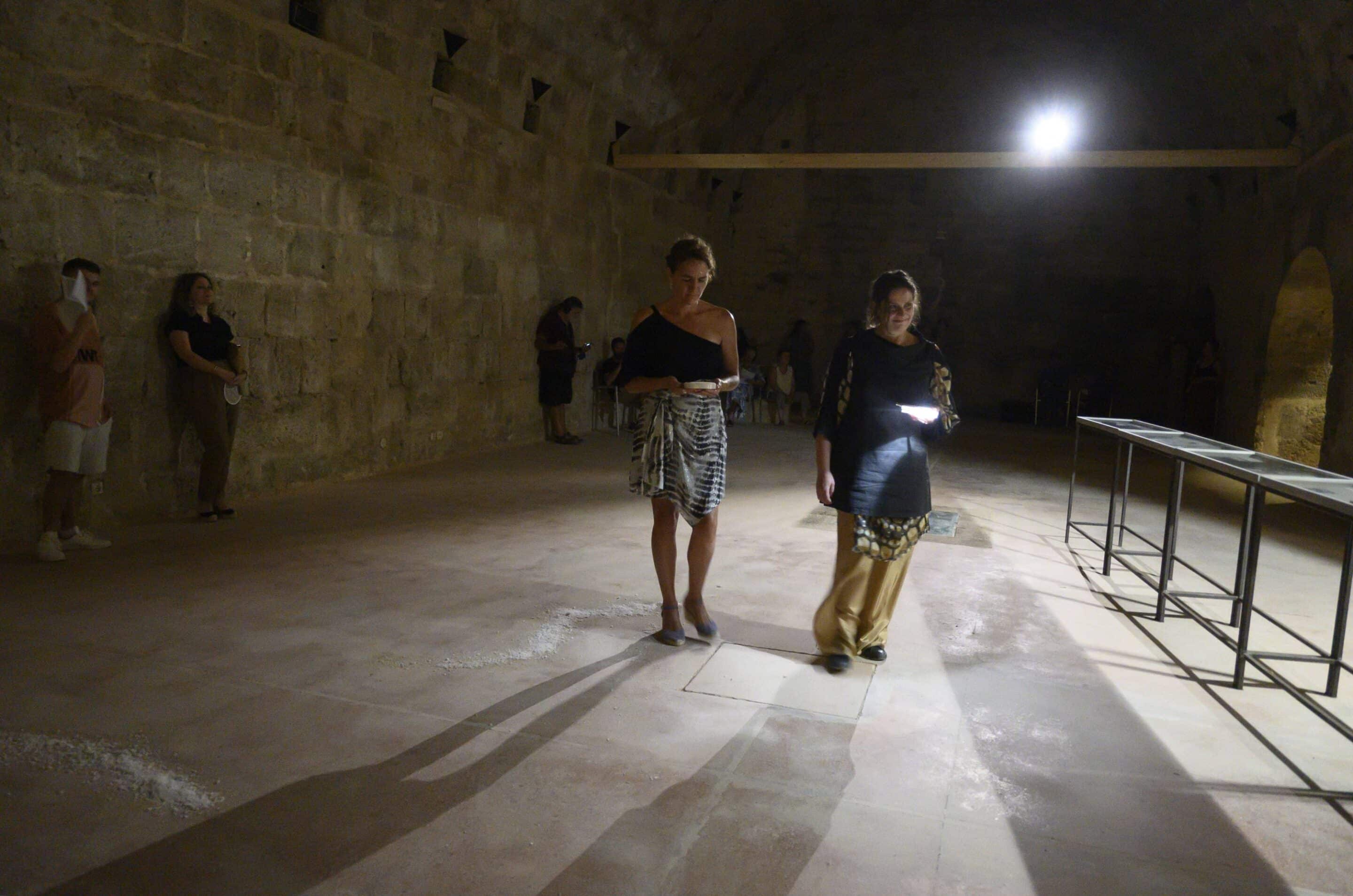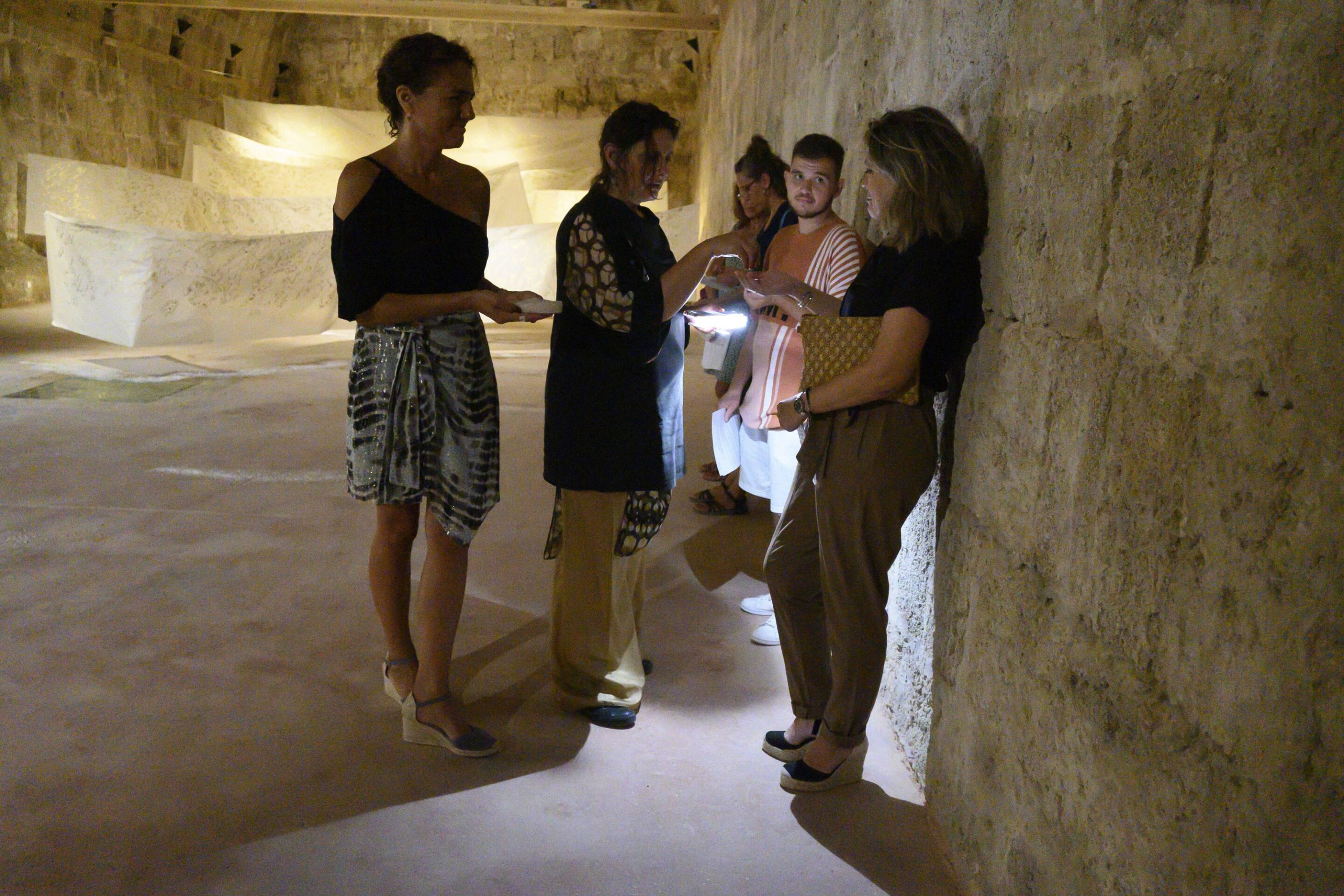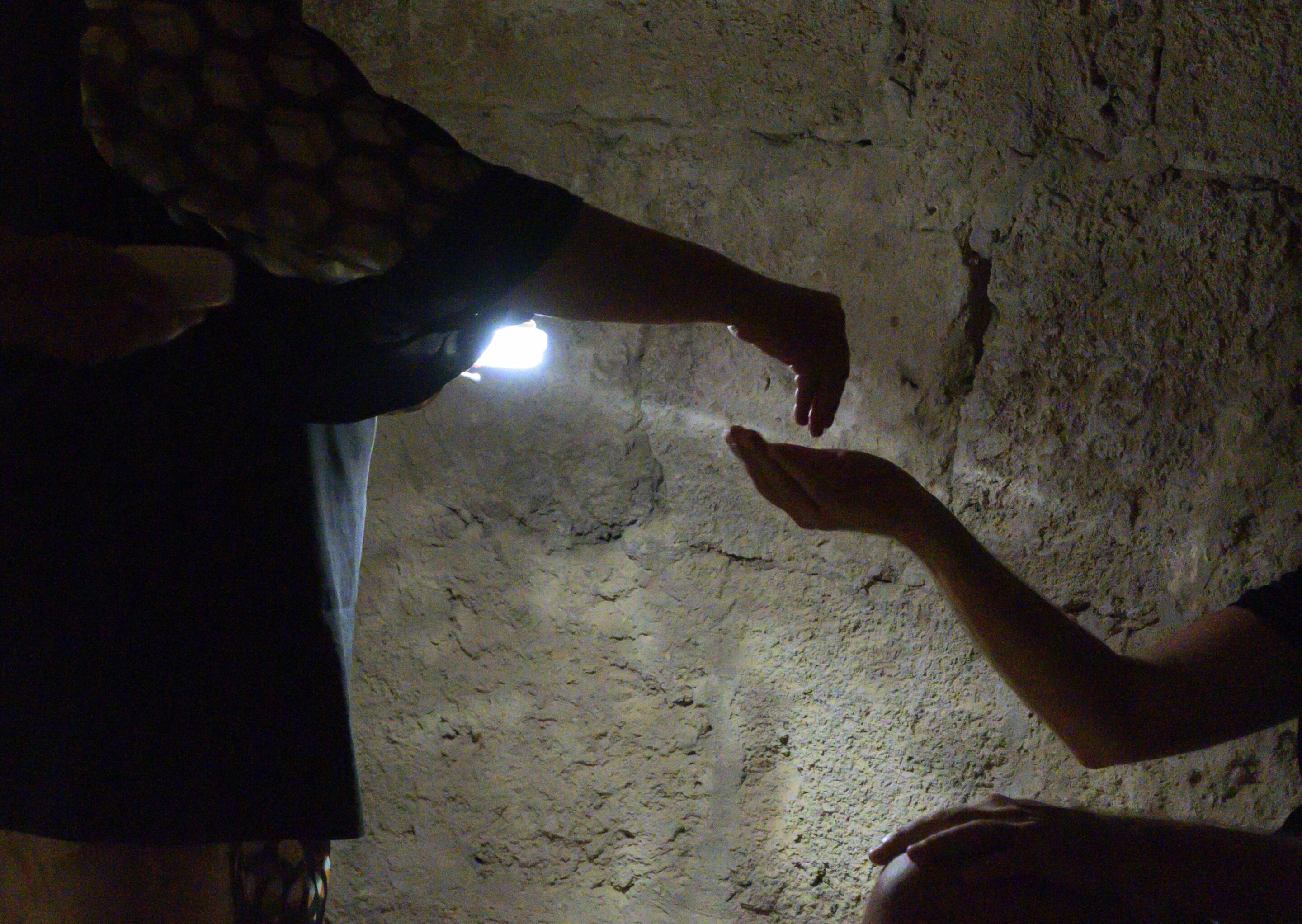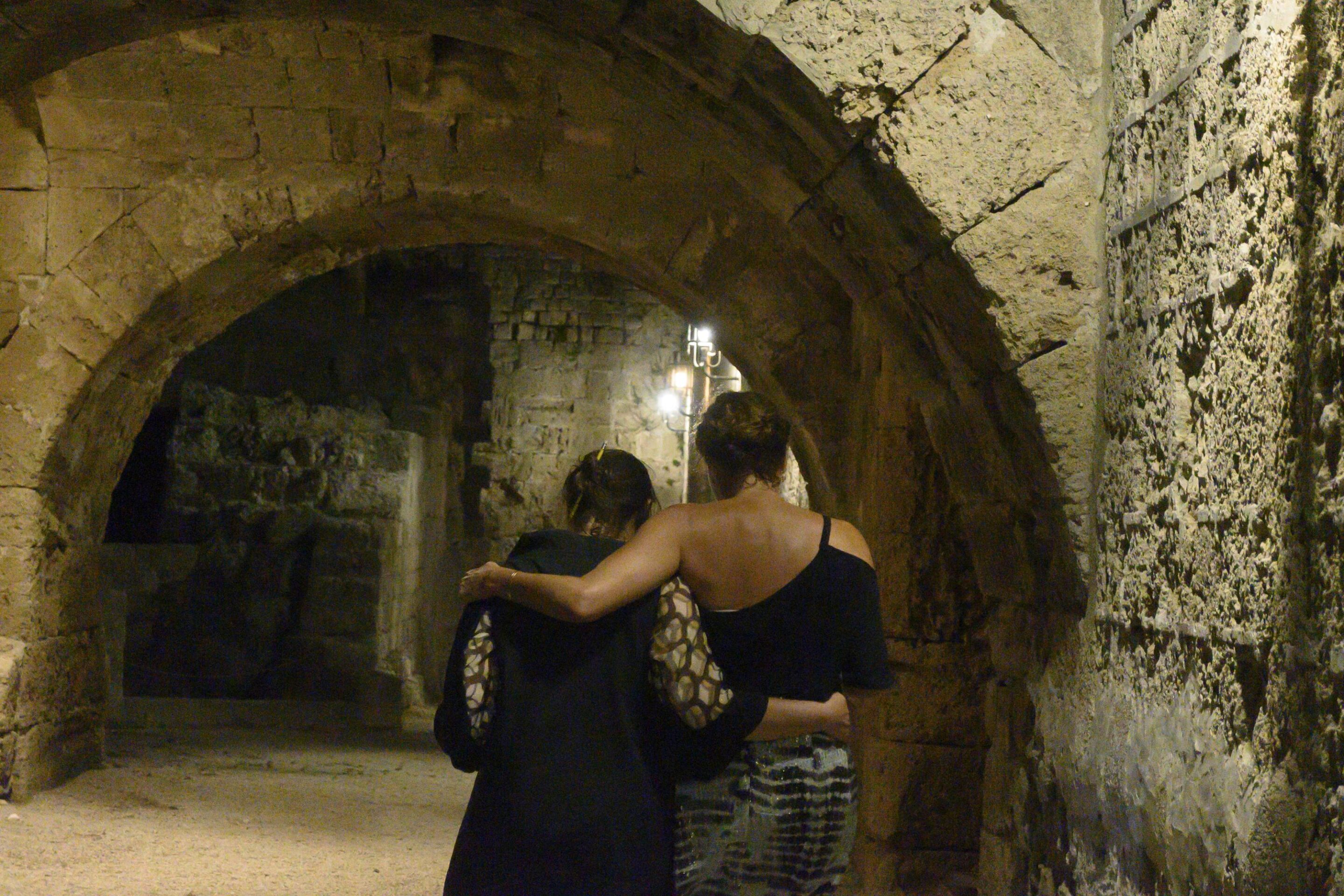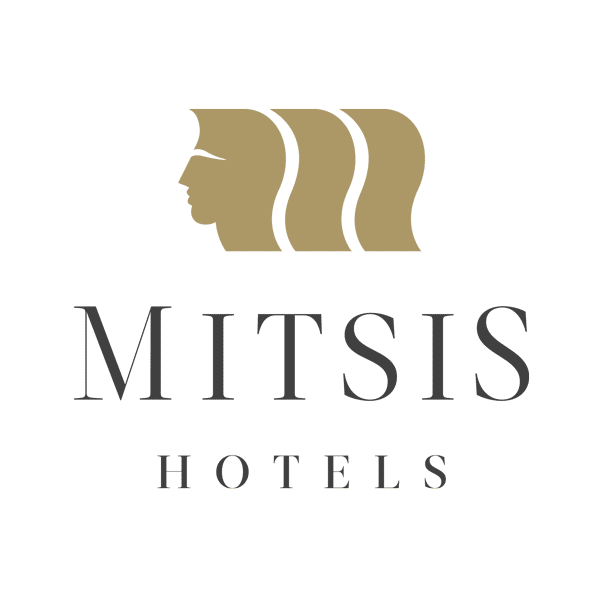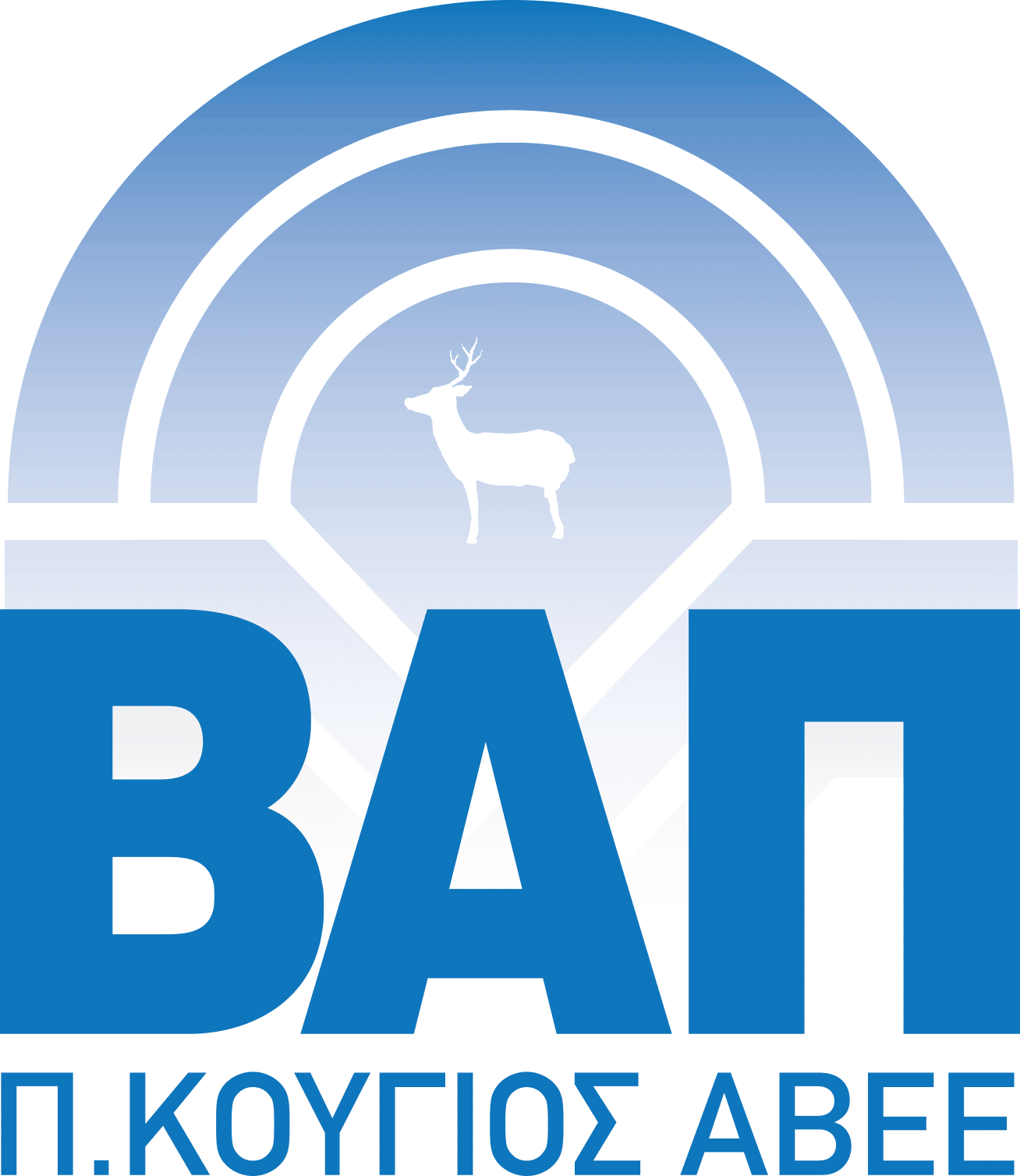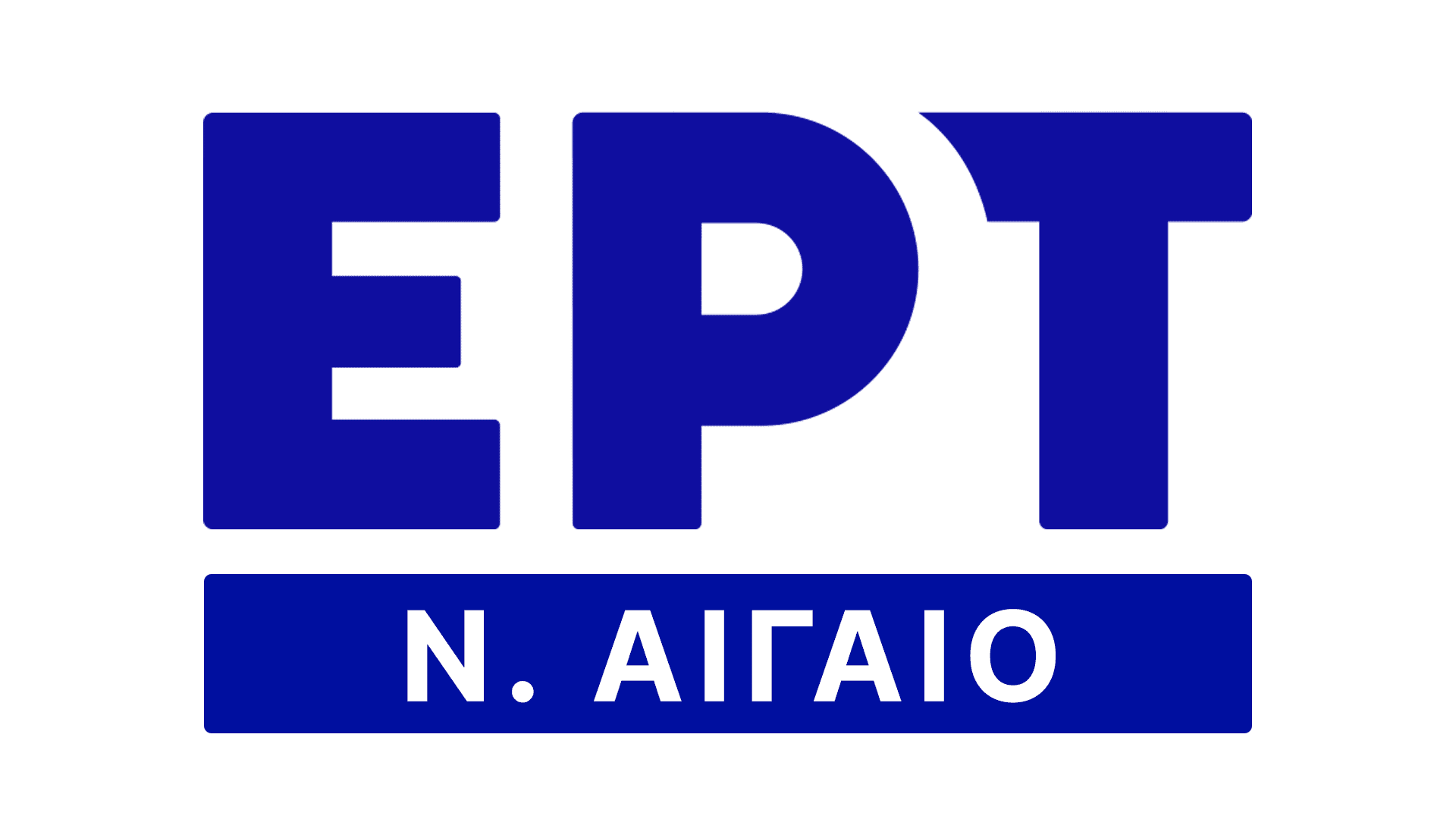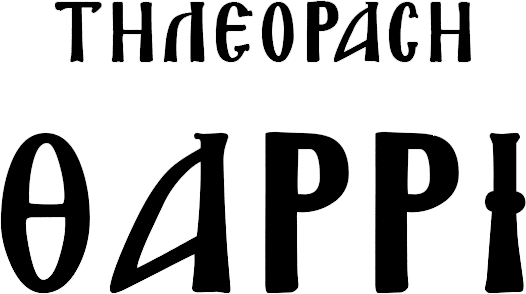Departure port – Rhodes
Bastion of St. George, Medieval City of Rhodes
IN PRESENTIA was the starting point of the TRANSIENS NOSTRUM journey.
It was a visual art and sound installation which attempted to highlight the complexity of the experience of mourning, combining light, the movement of the sea and sound.
15/07/2022
03/09/2022
Greece
- Project Elements
- Implementation Details
- Art / Educational Program
- Location Description
- Map
- Special Thanks
Actions/elements of the project
In Rhodes, the work consisted of the following parts:
Waves
A large-scale design, drawn with metallic paint over stripes of handmade paper, instigates a poetic space, like the imprint of a sea relief that gets transformed through the reflections of light. Coarse, raw salt laid scattered on the floor and followed the undulations of the work, evoking the foam of sea waves. The natural salts from the Bastion’s stone walls after patiently absorbing the humidity of the space, developed like natural expansions of the work.
18 Notes on a Grief
A modular work that developed across a sequence of metallic showcases, introduced the visitor to the darkness of mourning. The 18 short works seek to honor the clarity of the words of the authors. The works were presented in 6 small showcases – tables like opened pages of a diary. The light reflections on its last metallic component and the shadows of the iron showcases acted symbolically as a guided
axis leading from the vastness of the empty space to the lightness of the Waves installation.
Clepsydra / Hourglass
In the bowels of St. George’s Bastion centuries-old stalactites have been morphed. Their discreet sound of water dripping created an idiosyncratic rhythm that was transferred into the hall, through microphones. The Bastion is indeed instilling. In addition, Heron’s fountain, a Hellenistic device of circular flow, reconstructed by chemical glass laboratory equipment,
commented on the fluidity of time.
This unique clepsydra (hourglass – an ancient device used to measure the passage of time) – sensitively displayed the eternal flow of time , the changing, indeterminate rhythm of personal time and the poetic concentration of sentiments in tear drops.
Performance
The installation together with the architectural space functioned as a three-dimensional music score for the two distinct sound performances, presented at the end of the exhibition. During the performances, the melodic line of the voice followed the drawing lines of the artworks. The chosen sound colors were inspired by the reflections of the Waves. Text fragments by the 18 Notes on a Grief were used as abstract lyrics of the musical work. Scattered words, voices, breaths, phrases, old recordings, sought ‘contact’ with people and their stories.
Space as a modal element in shaping the installation
The installation is site specific, i.e. it is defined and configured based on the space in which it is implemented.
In Rhodes, the Hall of St. George’s Bastion, an enclosed, stone and secure architectural space with a curved roof, provided the necessary framework for the unfolding of the work. Its curvature acted as an embrace, while the skylights in the roof illuminated its darkness offering view corridors of elevation and communication. Its 600 years old history was highlighted by the real time sound of the instilling stalagmites, caused by the moisture in the cave-like conditions of its bowels.At the entrance, the fountain of Heron welcomed the visitors, bathed in the light that poured down from the one and only uncovered skylight. The fountain recalls the cycle of life and perpetual flow.
The skylights penetrated both the roof dome and the floor. The light, arriving from the depths of the space as well, invited the visitors’ gaze to seek the end of the depth and face the bottom of the sea.
The building’s marks of salt on the floor and walls acted as guides for the natural raw salt that had been spread out forming foams of waves. The moisture of the space absorbed by the salt, created eventually natural wet forms under the Waves.
Dialogue-engagement with the audience
TRANSIENS NOSTRUM is not a static installation but interacts dynamically with the visitor. Throughout the project, visitors are invited to wander within the installation space, to observe the light reflections on the drawing, the changing luminosity of the sculptural volumes, the shadows created by the moving bodies and the subtle, water related sound environment. Within a safe spatio-temporal field of connection, the visitors intertwine their experiences of loss, attempting a crossing of reconnection with life.
The exhibition seeks to create an abstract poetic space that addresses Loss through the spectrum of personal experience. Visitors are invited to share their personal testimonies, collected and recorded by external experts and organizations – such as the Istorima Archive and the University of the Aegean, with whom we collaborated in Rhodes. Through this experience of communication, the visitors interact and -to a certain extent- shape the installation itself.
TRANSIENS NOSTRUM thus activates synergies with other institutions and research groups. Wishing to create the groundwork for a network, extends across the Mediterranean, turning Loss into Relation.
Synergies
In Rhodes, the collaboration with the Ephorate of Antiquities of Dodecanese, was a very fertile synergy, highlighting the range of possibilities of the Promachonas site. Supporters-sponsors associated with Rhodes, such as Dodecanisos SEAWAYS, HELLENIC SALTWORKS and MITSIS HOTELS, supported the implementation of the project. Communication sponsors were ERT of the South Aegean (State Radio Station), Radio Lychnari and Tharri TV.
Sustainability and next steps: the presentation of the project in Athens and other Mediterranean ports.
Starting from the Bastion of St. George at the Medieval City of Rhodes, TRANSIENS NOSTRUM attempts to create a network that will host versions of the visual and sound installation adapted each time to the particularities and architecture of the selected spaces. Main characteristics are: their location next to the sea, the history and the architectural elements of the building (for example the curvature of the ceiling and the vertical axis presented by skylights or wells), the social structure and history of each port, their reference to the functioning to the port both as transit points and as haven.
Other cities where we plan to present the project are: Syros / observing the history of the shipyards (Municipal Gallery of the Cyclades), Volos / a region that has been active since the Neolithic era, (The Athanasakeion Archaelogical Museum), Piraeus, as the – still active- ancient natural port of Athens, Chania and Thessaloniki, as a crossroads of cultures.
In the wider Mediterranean basin, we aim to present the project at the archaeological site of Paphos in Cyprus for its special history, Alexandria for the expatriate Hellenism, Venice as a sinking city, Naples and the archaeological site of Pompeii as documentation of the snapshot of loss, Marseille as a multicultural port, Gibraltar, Suez and Vosporos canals as the boundary of the Mediterranean to the ocean and other seas, Byblos in Lebanon as one of the oldest Phoenician ports in the Mediterranean.
The artists are going to return to Rhodes, in the coarse of 2023, in order to implement an Art / Educational Program in collaboration with local authorities.
The Port
Rhodes, Modern Greek Ródos, also spelled Ródhos, major city of the island of Rhodes (Modern Greek: Ródos), South Aegean (Nótio Aigaío) periféreia (region), southeastern Greece. The largest urban centre on the island, Rhodes sits on its northeasternmost tip. In Classical history, Rhodes was a maritime power and the site of the Colossus of Rhodes. Because of its influence on Mediterranean history as well as its preservation of Gothic and Ottoman structures, the city was designated a UNESCO World Heritage site in 1988.
source: Encyclopedia Britannica
The Exhibition Space
St George monastery consists of three buildings of monastic cells and the post byzantine church of 14th-15th century A.D., around a central courtyard. During the ottoman period the monastery was converted to a holy teaching school (mendresse) and the church into a mosque. The impeccable restoration of the place, completed in 2006 by the Hellenic Ministry of Culture, received the EUROPA NOSTRA award.
The Bastion of St George, just beside St George monastery, one of the most prominent bastions of the medieval moat, has a rectangular arched hall, used for many years for all kinds of events.
source: Rhodes 2021
Videos
Installation Video
Teaser 1
Teaser 2
Teaser 3
Teaser 4
Teaser 5
Gallery
Credits
Christina Nakou
Visual artist
Anna Pangalou
Voice artist, sound artist, performer
Dimitris Pantelias - Paninos Damianos
Lighting Design
Eleni Maligoura
Photos
Testimonials
Τη τελευταία ημέρα της έκθεσης «ΣΥΝ-ΠΑΡΟΥΣΙΑ» στη Ρόδο, της Χριστίνας Νάκου και της Άννας Παγκάλου, έζησα κάτι μαγικό· ένα ταξίδι στις αναμνήσεις μου, μέσα από την ιστορία που αφηγήθηκαν με τόσο λιτό μα συνάμα δυνατό τρόπο οι δύο καλλιτέχνιδες. Η περφόρμανς της κας. Παγκάλου σε συνδυασμό με τις «18 σημειώσεις γύρω από ένα πένθος» και τα «κύματα» μού θύμισαν τον προσωπικό μου «ξεριζωμό». Σαν παιδί αναγκάστηκα πολλές φορές να αλλάξω τόπο κατοικίας και αυτό το γεγονός μού άφησε ένα ανεξίτηλο σημάδι στη ψυχή μου· οι σκέψεις μου πολλές και το ταξίδι έμοιαζε κάθε φορά ατέλειωτο και αβάσταχτο, ενώ στη πραγματικότητα επρόκειτο κάθε φορά για την ίδια διαδρομή. Οι ενθυμήσεις της παιδικής μου ψυχής να βρίσκεται μέσα σε ένα πλοίο με τα όνειρα, τις ελπίδες και τα «θέλω» στοιβαγμένα σε 1 βαλίτσα, στον «πάγο» προκειμένου να πραγματοποιηθούν οι επιθυμίες άλλων, «των μεγαλύτερων», τα δάκρυά μου που έρρεαν όταν το πλοίο έλυνε τους κάβους του, μου ήρθαν μεμιάς, λες και τα ζούσα εκείνη τη στιγμή, εκείνη τη τελευταία ημέρα της «συν-παρουσίας». Περιπλανήθηκα στα «κύματα» και ξαναζούσα αυτές τις μέρες κι ένιωσα τόσο τυχερός που μπόρεσα να νιώσω επιτέλους το θαύμα της Τέχνης! Γιατί η τέχνη για μένα δεν είναι μονάχα το αισθητικά ωραίο, αλλά και το συναισθηματικά ωραίο, αυτό που θα σου ξυπνήσει και τις πιο καλά κρυμμένες μνήμες.
Πριν από κάθε μετακόμιση, φρόντιζα να παίρνω κάτι ξεχωριστό μαζί μου, ώστε να μου θυμίζει «τα παλιά μου λημέρια», ένα μικρό κομμάτι από τη παλιά μου ζωή για να μην τη ξεχάσω. Ακόμα και αυτό το σημείο, κατάφεραν οι 2 υπέροχες καλλιτέχνιδες να αναπαραστήσουν – έστω κι αν αυτό ισχύει μονάχα για μένα. Πριν το τέλος της έκθεσης, μοίρασαν σε όλους μας μια μικρή ποσότητα φυσικού αλατιού, ως ενθύμημα της παράστασης. Το έχω πάρει μαζί μου στα Ιωάννινα, όπου και σπουδάζω, και μου θυμίζει εκείνη την ημέρα και τα όσα με έκανε να ξαναθυμηθώ και να «ξαναζήσω». Το παρελθόν μας δεν πρέπει να το ξεχνάμε, είναι αυτό που μας διαμορφώνει. Η «ΣΥΝ-ΠΑΡΟΥΣΙΑ» φροντίζει ακριβώς γι’αυτό. Αν χάσει κανείς αυτή την έκθεση, είναι σαν να θέλει να ξεχάσει το παρελθόν του – και τον εαυτό του.
Σας ευχαριστώ, Άννα και Χριστίνα, γι΄αυτή την εμπειρία. Ελπίζω όλοι να καταλάβουν το νόημα αυτής της έκθεσης και να τη τιμήσουν όπως της αξίζει.
Αλή Χατζησουλεϊμάν
Media
Sponsors
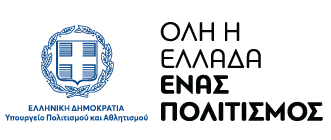
IN PRESENTIA was funded by the Ministry of Culture and Sports program in remembrance of the Asia Minor Catastrophe, “All of Greece, One Culture 2022”. The installation was presented with the kind support of the Ephorate of Antiquities of Dodecanese.

